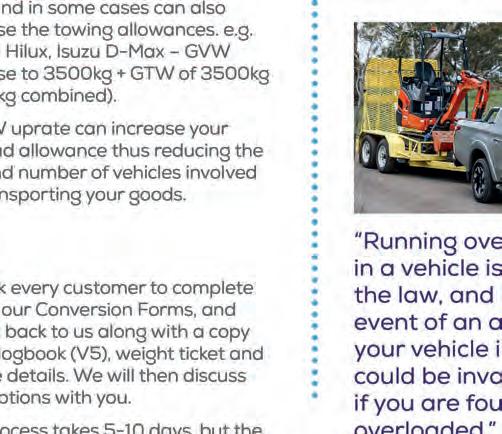
DRIVEN VOLKSWAGEN TIGUAN: Son of Touareg is now more Touareg than ever





DRIVEN VOLKSWAGEN TIGUAN: Son of Touareg is now more Touareg than ever









Jeep’s Gladiator Rubicon High Top – a chequebook-bashing double-cab you could recreate on your own driveway


The creation of a unique Defender 130 camper

Can a remade Mk1 be worth more than the latest Rangey?

Rusted out Wrangler lives again with a Mahindra body




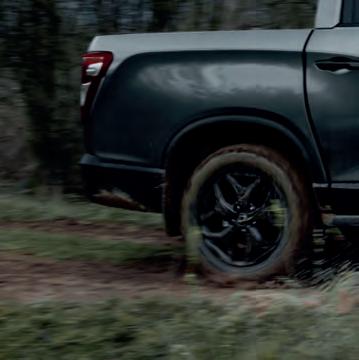






















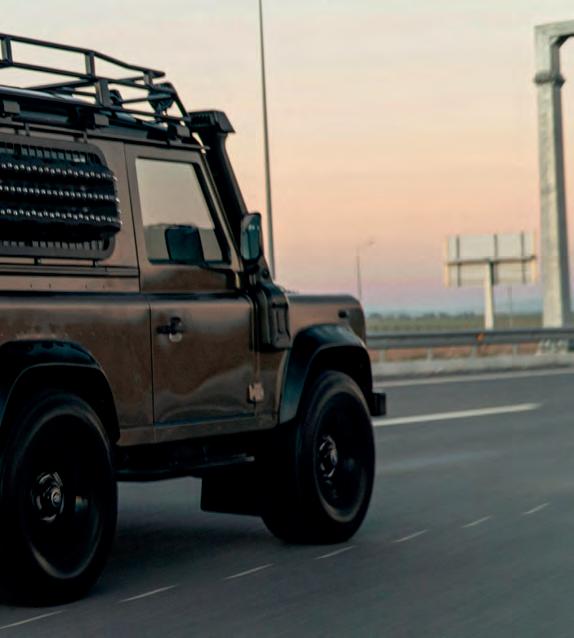









Now with even more detail, information and advice, this edition of the Terrafirma catalogue will provide you with everything you need to choose the perfect products for the ultimate upgrade.
With over 1,500 products, including hundreds of new parts, there is everything you need to enhance your vehicle.
Scan the QR code to view our digital copy!
Delivering Quality Jaguar and Land Rover Parts To the Trade


This comprehensive guide is packed with high-quality parts, service kits, and essential upgrades to keep your vehicle performing at its best—whether you’re on the road or exploring off the beaten path.
Complete Service Kits tailored for Discovery, Defender, Range Rover, Freelander, and more
Premium quality Transmission, Engine, and Suspension components for peak performance
Detailed sections on Brakes, Lighting, and Workshop Essentials
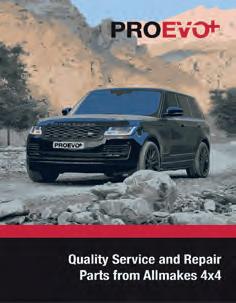

Easy-to-navigate product codes and an indepth index for quick reference

Manufactured to exacting standards to maintain your vehicle’s ride and handling.
PROEVO+ Steering and Suspension products are selected to meet the stringent level of performance & durability associated with Land Rover and Jaguar vehicles.


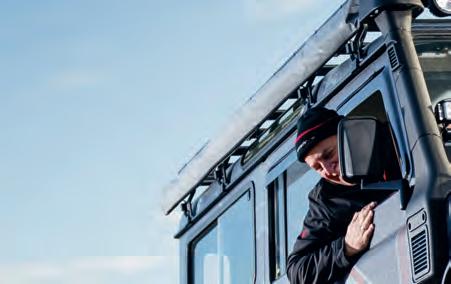














Tel: 01283 742969
Email: enquiries@assignment-media.co.uk
Web: www.totaloffroad.co.uk www.4x4i.com
Online Shop: www.toronline.co.uk
Facebook: www.facebook.com/totaloffroad www.facebook.com/4x4Mag
Editor Alan Kidd
Design Ian Denby-Jones
Contributors
Mike Trott, Gary Martin, Olly Sack, Gary Noskill, Dan Fenn, Paul Looe, Tom Alderney
Photographers
Steve Taylor, Richard Hair, Vic Peel, Harry Hamm
Advertising Sales
Tandem Media
Tel: 01233 555735
Issy Roberts Tel: 01233 228752 isabelle@tandemmedia.co.uk
Advertising Production
Colin Swaffer: 01233 220246
Jonathan Graham: 01233 220247
Jemma Heslop: 01233 555736
Subscriptions Agency
WW Magazines, 151 Station Street, Burton on Trent, DE14 1BG Tel: 01283 742970
Publisher and Head of Marketing
Sarah Moss
Email: sarah.moss@assignment-media.co.uk
To subscribe to 4x4, or renew a subscription, call 01283 742970. Prices for 12 issues: UK £42 (24 issues £76); Europe Airmail/ROW Surface £54; ROW Airmail £78
Distributed by Marketforce; www.marketforce.co.uk
Every effort is made to ensure the contents of 4x4 are accurate, but Assignment Media accepts no responsibility for errors or omissions nor the consequences of actions made as a result of these. When responding to any advert in 4x4, you should make appropriate enquiries before sending money or entering into a contract. The publishers take reasonable care to ensure advertisers’ probity, but will not be liable for loss or damage incurred from responding to adverts
Where a photo credit includes the note ‘CC BY 2.0’ or similar, the image is made available under that Creative Commons licence: details at www.creativecommons.org
Overlander 4x4 is published by Assignment Media Ltd, PO Box 8632, Burton on Trent DE14 9PR © Assignment Media Ltd, 2025


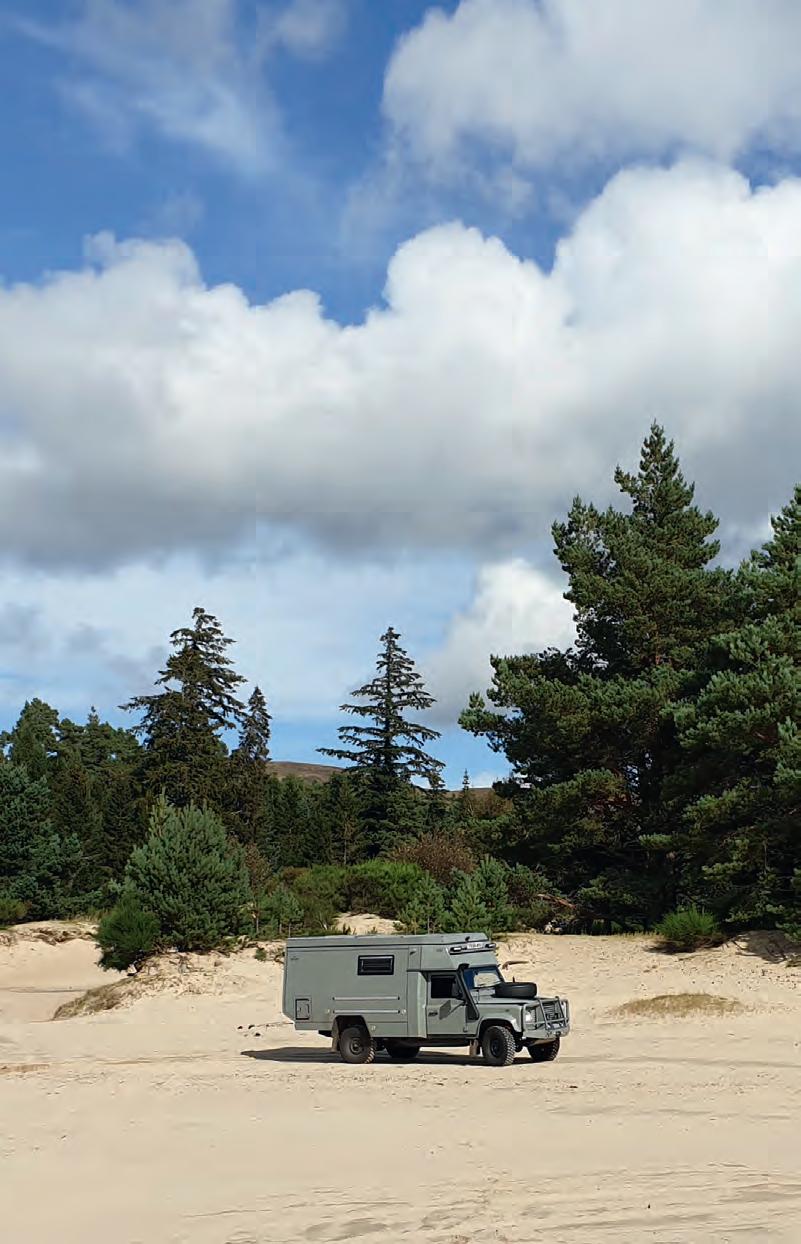
50


10 40

















Six issues for the price of 12 sounds like half-price – but when you subscribe to Overlander 4x4 for a year, you actually end up getting 75% off the price on the cover
4 News
Electric Range Rover shaken down in the desert, Dakar Defender set to compete in new Stock class, and Ineos aids mountain rescue volunteers
14 Products
You can’t get a new Land Cruiser J250, but you can sure get the kit to make it special
Every Month
25 Subscribe
Get Overlander 4x4 delivered for a fraction of the cover price
Destination Down Under for a spectacular example of what you can create based on a Grenadier
16 Volkswagen Tiguan 1.5 eTSI R-Line
Now more of a mini-Touareg than ever, VW’s family SUV is classy, great to drive and stonking value
20 Lotus Eletre R
Electric SUV from the masters of lightness and simplicity is neither light nor simple but has 905bhp so who cares?
24 Isuzu D-Max AT35 Basecamp
Can ARB’s finest expedition kit alleviate the horror of the Lake District at its torrential worst?
SEAT’s funky looking sports SUV gets a surreal but wonderful off-road treatment from JE Design and ends up looking like an expedition-spec GTI
26 Kingsley KSR
An original-shape Range Rover that proves you can have a modern 4x4 in a classic package

36
Jeep High-Top
The Mopar crew go to town on a concept pick-up which you could replicate
42 Lesser Spotted Hybrid
We’re used to seeing Land Rover bodies perched on a Range Rover chassis, but a Mahindra on a Jeep Wrangler? And that’s just the beginning…
50 Defender 130 Motorhome
The story of a camper build that went all the way down to the chassis and ended up with one of the sexiest Land Rovers of all time
4x4s
60 Isuzu D-Max GO2
The CST Sahara all-terrains are finally on, and our D-Max is already a whole lot quieter

‘THE MOST INTENSIVE TESTING ANY RANGE ROVER HAS EVER ENDURED.’
That’s quite a claim, but it’s what JLR says the forthcoming new Range Rover Electric is currently being put through as it endures temperatures exceeding 50°C in the deserts of the United Arab Emirates. These tests make for eye-catching marketing, of course. But there’s much more to it than just that. The vehicle will debut a new Intelligent Torque Management system which allocates the job of managing wheelspin to each individual electric drive control unit. According to JLR, this reduces the reaction time at each wheel from around 100 milliseconds to as little as 1 millisecond – allowing the system to negate the results of traction loss more effectively than ever before.
This has been demonstrated in the UAE in particular when driving on fine sand. JLR says that during testing, its vehicles are required to scale it five times without showing any reduction in performance in order to get a pass mark – and that the Range Rover Electric completed the feat with flying colours. ‘Well balanced weight distribution and an advanced suspension system maintain control and stability effortlessly through the sand, performing with ultimate composure. Uncompromised traction systems provide instant torque allowing for quick acceleration, responsiveness and a refined drive even when navigating diverse dune formations.’
The vehicles were also tested in urban conditions, which in temperatures of 50°C and up to 90% humidity pose another kind of challenge to an electric powertrain –
especially when no compromise at all is acceptable in the quality of the cabin environment. ‘There is no place more challenging for a climate system,’ explains JLR. ‘From dynamic desert climbs to sun-soaked city cycles, nothing is left unexplored in pursuit of maximum client cabin comfort and vehicle capability.’ To achieve this, the Range Rover Electric features a new thermal management system designed to intelligently control heat distribution around the vehicle; the climate in the Middle East is the ultimate test of its efficacy.
‘A hot climate is one of the most challenging for any battery electric vehicle, because of the need to cool the cabin and optimise battery performance at the same time,’ explains Thomas Müller, JLR’s Executive Director of Product Engineering.


‘The additional challenge of driving on sand requires controlled low‑speed torque, so our specially developed traction control and thermal management systems work in harmony to ensure power delivery is unaffected.
‘Our tests have shown that in this climate, repeatedly driving the equivalent of 100 metres uphill on fine sand, Range Rover Electric matches the performance of its ICE equivalents –in some instances, even surpassing them – thanks to the introduction of these new features.’
Final testing of the Range Rover Electric continues as JLR ‘refines and crafts the epitome of Range Rover luxury.’ No prices have yet been announced, but you’ll be able to put your name down for one at some point during the next 12 months.





LAND ROVER HAS ANNOUNCED MORE DETAILS ON ITS INVOLVEMENT WITH THE DAKAR RALLY, which will see the Defender competing in the event as part of a three-year campaign starting next year. A two-car team will participate in all five rounds of the 2026 FIA World Rally-Raid Championship (W2RC), with a third vehicle joining in for the Dakar itself.
The Defenders will compete in a new Stock class, for production-based vehicles. Contrary to widespread assumptions (by us, in last month’s issue, as well as by many others) that the Dakar Defender would leverage the engineering know-how JLR brought in house with the closure of Bowler Motors as a racecar manufacturer, Land Rover has partnered with Prodrive for the vehicle’s development programme.
This was confirmed by James Barclay, JLR Motorsport Managing Director, in a statement issued by Dakar organiser ASO, who said: ‘It will be an incredible adventure from both human and engineering perspectives, and the team are already working hard to develop Defender within the new Stock FIA W2RC rules for 2026 that will make for such a competitive category. We along with the FIA, ASO and other manufacturers have helped shape these new regulations, which represent an exciting new chapter for the Dakar, W2RC and Rally Raid in general.
We’re also delighted to confirm our technical partnership with Prodrive. Their experience will be invaluable to the programme, and I’m looking forward to bringing you more news soon of our Rally
Raid competition-spec Defender that’s in development.’ JLR itself also issued the same statement, with the mention of Prodrive removed.
The three-year competition programme is in addition to a long-term sponsorship agreement which, beginning with the 2025 Dakar, sees a fleet of Defenders doing support and reconnaissance duty with the rally’s organisers.
The Defender works team will complete a full test and development programme during 2025, in preparation for a first competitive even in the autumn ahead of its Dakar debut in January 2026. The ‘luxury British adventure brand’ (and you thought they made 4x4s) says the Stock category will be ‘the perfect platform to demonstrate the extreme capability and

durability of Defender,’ referencing the stiffness and light weight of its all-aluminium D7x architecture.
‘Defender is already showcasing its capability and durability through our official car partnership,’ added Defender MD Mark Cameron. ‘But to know that in 12 months we’ll be back with a three-car Defender works team entry at the beginning of a full FIA World Rally Raid Championship campaign is incredibly exciting.
‘There’s much work to do over the next 12 months, but with Defender works programme testing and development well underway, the team are already embracing the ultimate motorsport adventure that lays ahead from 2026.’
From 2025, the Defender is the Dakar’s official vehicle partner. A fleet of 20 Defenders has been supporting the event (which finishes the day after this issue of Overlander 4x4 is published) as transport for race officials and VIP media. A further specially prepared Defenders will be used by the Dakar’s organisers in the 2026, 2027 and 2028 events to reconnoitre the special stage routes on which their competition cousins will then bid for glory in the event itself.

Cynghordy Llandovery
Carmarthenshire, SA20 0NB
Tel: 01550 750274
e-mail: info@cambrianway.com

Family run guest house and self catering cottages with spectacular views, en-suite bedrooms, comfortable lounge bar and excellent home cooked food.
Pressure washer, drying room, map room with local lanes marked, on-site 4x4 course, guides and GPS hire available.
A very popular venue for both individuals and groups of 4x4 enthusiasts




















Scottish Mountain Rescue recently held its annual National Training Conference. Naturally, off-road driving was one of the skills the charity’s volunteers were learning –and Ineos was on hand with a fleet of Grenadiers to help them do just that.
Based at Glenmore Lodge in the Cairngorms, the event saw representatives of ten mountain rescue teams tackle a variety of real-world rescue and recovery scenarios on the nearby Alvie Estate, using Ineos’ Grenadier station wagons and Quartermaster pick-ups. ‘We were able to provide our volunteers with crucial handson 4x4 coaching, training them to tackle
tough terrain without the use of a vehiclemounted winch,’ explained Ray Smith, 4x4 Lead at Scottish Mountain Rescue.
‘These skills are indispensable in many rescues where 4x4s are used, not only to transport volunteers to remote locations but also to move casualties and act as a mobile centre of operations. Everyone was impressed by the capability, comfort and characteristics of the Grenadiers.’
In addition to its work with Scottish Mountain Rescue, Ineos is already in service with a number of other search and rescue organisations across Europe and beyond. During 2024 it became the official vehicle partner of the Royal National
Lifeboat Institution, while in New Zealand the Grenadier is used in ski resorts and other alpine environments to support the work of Search and Rescue Dogs Avalanche. Several nations’ fire and rescue services already have the vehicle on their fleets, too.
‘Hooking up with Scottish Mountain Rescue is yet another example of how the versatility and capability of the Grenadier makes it a compelling proposition to emergency services and rescue organisations,’ said Ineos Automotive CEO Lynn Calder. ‘It’s becoming the vehicle of choice for rigorous frontline work around the world.’
For the first time ever, the most popular body style searched for an Autotrader during 2024 was the SUV. During the course of the year, the online car sales platform recorded a gigantic 708 million views during the course of the year, knocking the previously ubiquitous hatchback off the top spot. The most popular individual brand was Range Rover, with 2.2 million views, while the Defender’s placement in the Traitors TV show saw a 39% spike in searches following the start of the series. That’s nothing compared to the 69% increase in searched for BYD during Euro ‘24, though, which was sponsored by the electric SUV maker.



Custom-made seat covers designed and manufactured in the UK. These seat protectors are guaranteed waterproof and are perfect for guarding your Land Rover’s seats from not only daily wear, but also from spills, oil, grease, pet fur, and everyday dirt and grime. Attention to detail ensures that these covers fit seamlessly.
Custom-made seat covers designed and manufactured in the UK. These seat protectors are guaranteed waterproof and are perfect for guarding your Land Rover’s seats from not only daily wear, but also from spills, oil, grease, pet fur, and everyday dirt and grime. Attention to detail ensures that these covers fit seamlessly.
They feature elasticated borders around the seat base and come with complete backs. The back also features a slit to enable the rear passengers to use the seat pocket in front of them. To ensure they remain securely in position, they’re equipped with elastic straps and buckle fastenings beneath. Additionally, individual headrest covers are included, allowing for height adjustments.
They feature elasticated borders around the seat base and come with complete backs. The back also features a slit to enable the rear passengers to use the seat pocket in front of them. To ensure they remain securely in position, they’re equipped with elastic straps and buckle fastenings beneath. Additionally, individual headrest covers are included, allowing for height adjustments.
The covers have expertly sewn seams that are then top-stitched, ensuring durability and a quality finish. Convenient velcro openings at the seat top mean you can install them without the need to remove the headrests.
The covers have expertly sewn seams that are then top-stitched, ensuring durability and a quality finish. Convenient velcro openings at the seat top mean you can install them without the need to remove the headrests.
Constructed from resilient 600 Denier Polyester with a polyurethane coating, the fabric is 100% waterproof. This robust and premium material has a slightly textured surface for added comfort.
Constructed from resilient 600 Denier Polyester with a polyurethane coating, the fabric is 100% waterproof. This robust and premium material has a slightly textured surface for added comfort.






Every now and again, someone does something mad and you’ve just got to stand back and admire them for it. I’m not talking about mad in the Cape Fear sense, or the Charge of the Light Brigade or something like that – more the kind of madness, if that’s what it is, that drove people to climb Everest or discover America. Insert joke of choice here.
It’s not quite in the same league as those world-class feats of boldness. But someone, somewhere looked at the Cupra Formentor and said ‘let’s turn it into an offroader.’ And then the people he said it to, rather than making some tired comment about answering a question nobody had asked, said yeah, alright, let’s. So they did.
The someone, at least at a corporate level, is JE Design. The company is German, as are so many of the most
visionary tuners and modifiers, and it specialises in VW Group vehicles, specifically VW itself, Audi and Seat. Cupra is Seat’s stand-alone premium performance brand, not unlike what Lexus is to Toyota in terms of luxury.
JE says its main focus is ‘styling in the aerodynamic sector using synthetic materials that are manufactured using the methods of vacuum forming, injection moulding and foam plastic technology.’ Got that? We think it means they make body kits. But there’s a lot more than just a mere body kit to this bad boy.
For starters, you’d assume that precisely no-one who’s ever gone to JE with a big wad of money burning a hole in their pocket has ever wanted to spend it on a vehicle with a lift kit. But that’s what this one boasts, with taller suspension making
room for 225/50R18 tyres (the same profile as the Isuzu D-Max Mudmaster we tested recently) and a 30mm increase in ground clearance being the result.
You can buy the lift kit, too. Though it’s unlikely to come as a surprise that it won’t make your Formentor flex like the blunt end of an old Range Rover. It actually comprises a set of spacer rings between the chassis and the standard suspension, adding height but nothing else. Just as importantly, though, it doesn’t take anything away – JE promises that the vehicle’s factory-fit chassis software is unaffected by the extra height.
The 225/50R18 tyres we mentioned a moment ago are Yokohama Geolandar A/Ts, adding a level of tread chunkiness that actually does make a difference in low-traction terrain. They live on a set

of black alloy rims with a faux beadlock appearance; well, if you will run 50-profile rubber off-road…
‘The wide outer ring has been over lathed,’ explains JE. ‘As a result, the deeper elements in the outer ring stand out in colour, creating the right off-road look.’ Got that? Good, because it’s the only way in which you’re going to get these wheels as they’re a one-off created only for the show car you see here.
Something you can get is the spacer kit which widens the vehicle’s track to match its taller stance. And the same goes for the 10-piece wide-body styling kit, borrowed from JE’s existing on-road conversion, which is finished in a blend of textured paint and faux-metallic foil.
Actually, you can only get the body kit in standard form. The custom version
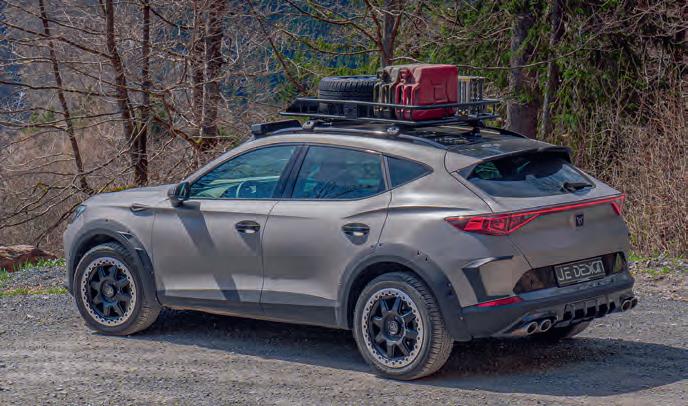


on the car you’re looking at here has ‘optical screw fittings’ on the wheelarch extensions, something else that was made only for show.
Up top, the vehicle has a tubular rack attached to its roof rails. Beneath this, when viewed from the front, is a light pod containing a pair of LED arrays. JE describes these as ‘worklights’ and they’re operated by a separate switch rather than being wired in to the main beam circuit, which seems odd as so many properly e-marked options are available these days.
While the Formentor in the photos can’t be built using off-the-shelf parts, there’s no denying it’s cool. And you could get close to it by shopping your way through the JE catalogue, too (we refer you back to that big wad of money burning a hole in your pocket here).


Would you want to? Well, it’s unlikely to be your weapon of choice for a visit to the Sahara. But if you can stop pretending that you secretly enjoy looking cool in your big old expedition wagon, you might be able to see this as the soft-road equivalent of that image. And it’s actually quite a functional off-roader, too, in the context of what the base vehicle is.
What the base vehicle is, in case you didn’t know, is one funky SUV. The Formentor is sharply styled, well equipped and, in particular with the 310bhp engine at the top of the range, an absolute weapon to drive. Few vehicles come closer to being an off-road GTI – and with the off-road element enhanced, JE’s All-Terrain special makes that more of the case than ever. Mad? Maybe – but hell yeah, you’ve got to love them for it.
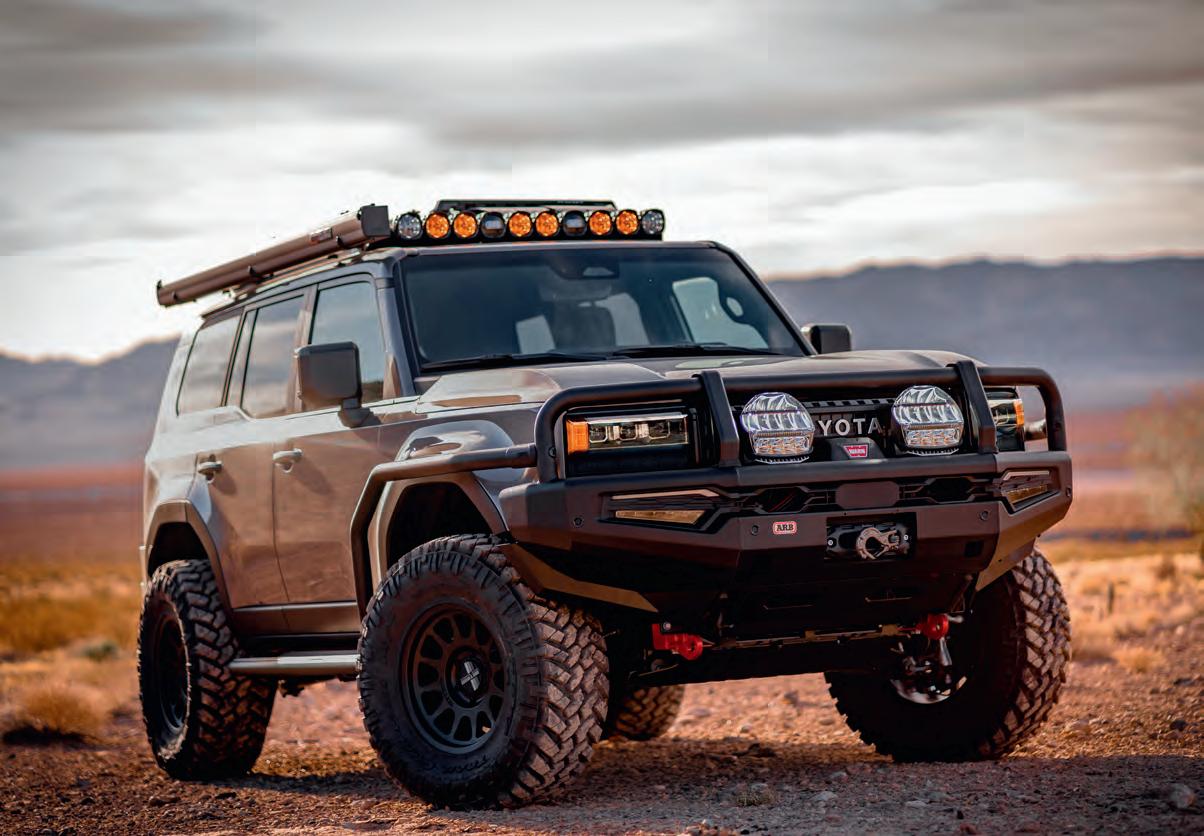
GETTING YOUR HANDS ON THE NEW TOYOTA LAND CRUISER MIGHT NOT BE VERY EASY. Or very possible at the moment, with Toyota not currently taking orders for the vehicle. But if you do somehow manage to get hold of one, at least you won’t struggle to make it stand out from the crowd of, er, no others.
As is so often the case, you have ARB to thank for this. The Australian off-road giant is already on the market with a range of products for the new J250 Land Cruiser, all of them built to the same standard for which the company is known – and designed to integrate with the vehicle’s

high-tech safety systems. ‘This thorough engineering approach ensures ARB products not only protect and enhance the vehicle but also complement its cuttingedge technology.’
And they make it better than ever offroad, too. Which is what ARB is all about, after all. The range of equipment available for the vehicle includes:
• Bull bars: Made in ARB’s own facility in Australia, the familiar Summit MKII Bull Bar is built to protect the front of the vehicle from damage caused by animal strikes. So it won’t flinch in the face of you using it to nudge open a five-bar gate. More

importantly, you can mount a winch on it, as well as other kit like driving lights and CB whips.
• Suspension: ARB’s Old Man Emu range is already very well known, and its Nitrocharger Plus, MT64 and ‘best of the best’ BP-51 systems are all available for the J250. Depending on your plans for the vehicle, in particular with heavy on-board equipment and/or off-road use in mind, these offer a variety of solutions for designed to improve your suspension’s comfort, handling, and performance.
• Air-Locker: British versions of the new Land Cruiser come with a locking rear diff as standard, and this will be enough for 99% of users. However for the very most technical off-road work, a front locker might also be necessary – and in addition, ARB’s Air-Locker is highly regarded for its strength and reliability even when faced with extreme shock loads.
• Side Protection: Safe to say replacement doors and body panels for

the new Land Cruiser will be slow-moving stock items in the parts warehouse. ARB’s Summit Side Rails and Side Steps protect the vehicle’s sills, and in turns the wince-inducingly expensive parts above, against damage from rocks and tree stumps.
• Recovery Points: You could say it’s a bit naughty of ARB not to include recovery points in the design of its bull bars. But then you see the huge robustness in the forged recovery points it offers separately and understand why. However badly stuck you’ve got your Cruiser, they’re not going to fail.
• Underbody Protection: As with every vehicle, off-roading presents a risk of impact damage to your steering, sump, drivetrain or fuel tank. ARB’s heavy-duty bash plates shield these areas and have the additional benefit of giving the vehicle a smoother underbody, allowing it to slide over obstacles that might otherwise snag it – damaging something in the process
• BASE Rack: ARB’s own design of roof rack is integrated with a wide range of off-roading and overlanding equipment. It’s lightweight and aerodynamic, and is sure to be among the most popular of all its accessories for the new Land Cruiser.
• Driving Lights: There’s no shortage of options in this area, but as always some of it You Know Where and is therefore likely to be either fake, rubbish or a rubbish fake. The answer is to go for a trusted brand from a trusted source, and plenty of people trust ARB’s Intensity, NACHO and Bushranger lines of auxiliary lighting.








ARB is celebrating half a century in existence this year, having been established in 1975 after its founder Tony Brown travelled round the Top End of Australia in a Series I Land Rover and came across no end of fellow overlanders who were struggling with products which weren’t up to the rigours of the Outback – and that experience is brought to bear on the huge range of accessories it produces. You don’t have to have a new Land Cruiser to get the benefit of the company’s knowhow, of course, which is just as well because its UK importers would have a lot of time on their hands otherwise – but having had its kit on several of our own vehicles, we know that whatever you drive, you’ll never regret spending the money it takes to equip them to the sort of standard ARB represents.

































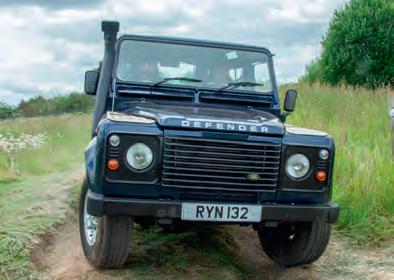




Land Rovers are returning to Bath & West this April for a weekend filled with Land Rovers!
Exhibitors old and new will join us, selling everything from parts & accessories to tyres, clothing and toys. Talk to overland adventure specialists about your next trip, discuss modification options with companies with the know-how and other experienced Land Rover owners.
























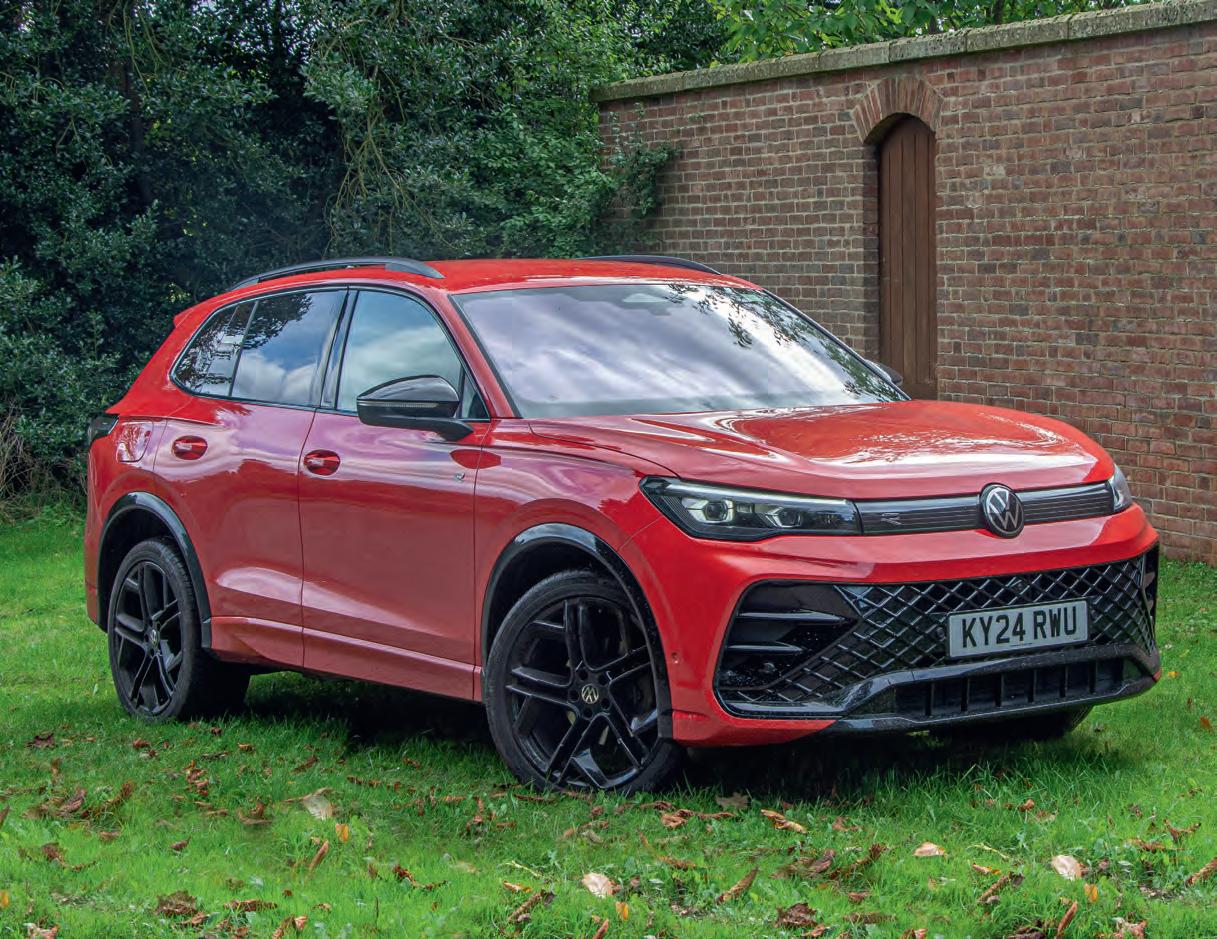
We’ve always kind of loved the Volkswagen Tiguan. It’s a bit like a smaller Touareg, and we’ve always loved that too, ever since way back in 2003 when the first example came thundering in on a wave of V10 goodness.
The Tiguan was never quite that mental but it’s always been one of those vehicles you can’t help but admire. Its case wasn’t helped when the Skoda Kodiaq came out and it was a bit like when your hot new girlfriend takes you home to meet her family and you discover that her sister is ever hotter, but the sales charts showed that there was plenty of room in the market for
both. We’re clearly not the only ones who’ve always loved the Tiguan.
The new Kodiaq came out last summer and has just been crowned 4x4 of the Year 2025. There was a new Touareg quite recently too and it’s as suave as ever. And then there’s the new Tiguan – which, unlike the old one, looks and feels more like a smaller take on the Touarag than a more Volksy take on the Kodiaq.
Trying to beat the Kodiaq at its own game would be like trying to nail jelly to the ceiling. And that’s not the Tiguan’s game. Instead, Volkswagen has moved it into a subtly more premium space, somewhere just below Audi but distinctively different
to all the other brands in the VW Group in a way that keeps its appeal riding high.
The Tiguan looks more assertive now. We’d say aggressive, based on the looks of the vehicle we tested, but it’s the R-Line which has more of the styling you expect in a performance model. Its front grill has a deeper, more open-mouthed design to it which goes with 20” alloys to add a touch of menace to the sleek styling of the models below it in the range.
The R-Line is available with a choice of six powertrains. There’s a 1.5-litre petrol engine, a plug-in hybrid with two different outputs, a 2.0 diesel and two 2.0 petrols. The latter bring all-wheel drive to the party,



as well as the option of enough power to make things distinctly quick – though no Tiguans are slow. No Tiguans are manual these days either, though – if you want one, you’re getting a DSG box or nothing.
Our test vehicle was fitted with the entry-level 1.5 eTSI, a mild hybrid unit with 150bhp, 184lbf.ft and a 0-62 time of 9.1 seconds. Not stunning but certainly adequate in a family SUV, and when you’re getting mpg in the high 40s you have every reason to be pleased with your choice.
All things considered, a list price of £40,725 should make you happier still. As we’ve all discovered, that’s not actually all that much any more – and the R-Line gives

We’ve become used to Volkswagens’ cabins being superbly made but quite conservative, however the latest Tiguan has a bit of fun to its character too thanks to an array of mood lights which can be toggled through 40 different colours. The digital dash is big and the media screen is enormous – at 15” in size, this one is an optional extra, but the R-Line model comes with a 12.9” example as standard and that’s already pretty huge
you a lot of kit for your cash. Three-zone climate, adaptive cruise, a 10.25” digital dash and 12.9” media screen, wireless charging and connectivity, sports seats that give you a massage… there’s a lot going on, and that’s before you look at the enormous list of safety and driver assist equipment. Maybe they are trying to give the Kodiaq a run for its money after all…
Our test vehicle also had £8205’s worth of options on board. This included Matrix LED headlights, a 15” media screen upgrade, Dynamic steering and chassis control, electric tailgate, VW’s Black Styling Pack and a further set of driver assist functions. We reckon we’d tick about three grand’s worth of the same boxes. Anyway, it’s very well equipped indeed whichever form you get it in and with a starting price of £35,105 it’s very good value too.
Step inside and you know what’s coming. The build quality is rock solid, and the styling is classy and elegant. Volkswagen tends not to go for flights of fancy, but there’s an array of mood lights in the upper door trims and on the passenger’s airbag cover which definitely adds a sense of fun – if you can take your eyes off that massive infotainment screen next to it.
Overall, the interior looks good in a combination of dark grey leather with
light grey stitching and piano black panels around those mood lights. The seats add to the effect too, majoring on high quality fabrics rather than just throwing leather everywhere. There’s a blue trim line around them, too, which echoes the use of the same colour to add a highlight to the dash and doors.
Those seats are particularly comfortable, too. They’re heated, which is nice, and give you a massage, which is even nicer, but even when they’re just being seats they do the job beautifully. There’s loads of support, both to keep you in place if you’re chucking it around and to keep you feeling fresh and ache-free on a long motorway journey, and the driving position is roomy in all directions as well as giving you an excellent view of the road ahead. It’s a very relaxing and extremely easy vehicle to drive.
This despite one or two little irritations from the media system when it dropped out of Apple CarPlay and, when we engaged reverse, bringing up the rear view camera then immediately going on to a visual graphic instead. Each of these things happened more than once, and each of them was annoying. Hopefully VW has installed software updates by now which have put them right.
You can’t fix poor rear knee room with a software update and we thought that’s what we were going to encounter in the

Tiguan but in fact it’s way better than we expected. The backs of the front seats are soft and nicely recessed, so even with a gangly monster behind the wheel a similar specimen will be able to fit in behind them. Headroom is similarly good to the front, and although the waistline is quite high there’s still a good view out, with your head well positioned in the centre of the window. It doesn’t rewrite the rule book for accommodation, but it follows all the rules and the result is chilled-out travel for four big units.
You’ll get some big units of cargo in there behind them, too. The boot is predictably huge with the seats down (they lie a little way off flat) but what’s most impressive is how much space there is for luggage with them up. Five people and all their stuff? Happy holidays.
As we’ve mentioned, the Tiguan is a very relaxing SUV to drive. In this way, it’s just like the Touareg. In particular, cruising on the motorway is a sumptuous experience, with a smooth and quiet ride that’s undisturbed by engine, road or wind noise. You’re not forever having to adjust the steering to

keep going in a straight line, and the cruise control does an unfussy job of keeping you a safe distance from the car in front.
With Volkswagen’s DCC Pro and Dynamic Steering a £1025 addition on our tester, the opportunities to adjust its drive modes for comfort and agility were enhanced by the use of adaptive dampers and progressive-rate steering. This means it’s hard to know when we were testing the vehicle itself and when we were testing its options list, but by the simple expedient of leaving the drive mode dial alone we found that without adjusting anything, it was a breeze to drive in town and entertaining to throw around on B-roads. Ride quality here is firm but not to the point where that becomes a bad thing, and it handles tautly in fast corners with positive steering and predictable body movements. It’s fun – but also very sensible when you need it to be.
Something else it is is eye-catching. We’ve tested some proper look-at-me motors in the past and that’s just what people did, but we were surprised by how many second glances the Tiguan earned us. Perhaps it was the R-Line styling, perhaps it was the 255/40R20 wheels and tyres or perhaps it was the rather splendid

Persimmon Red paint colour, or perhaps it was just that people hadn’t clocked the new Tiguan before. Either way, round our manor, where every other car is either a Beemercudi or Teslanevitable, it cut quite a dash and it certainly didn’t go unnoticed.
Being a 1.5, our test vehicle only had front-wheel drive. However with Volkswagen’s XDS electronic diff lock managing the torque distribution between those two wheels, it’s capable of putting down impressive traction in appropriate conditions. Extreme axle twisters don’t qualify but rough, unsurfaced tracks certainly do – and a covering of anything slippery, be it mud or snow and ice, won’t change that.
Whether the Tiguan really is upmarket compared to the Kodiaq is debatable with a model range starting at £35,105. But the Tiguan really does have the feeling of a scaled down Touareg and between its looks, its equipment and its absolutely classy driving performance, it’s every inch a worthy little brother to VW’s stellar large SUV. It feels classier than the previous model but remains every bit as practical – and whichever version you go for, to us it’s a bit of a steal.

































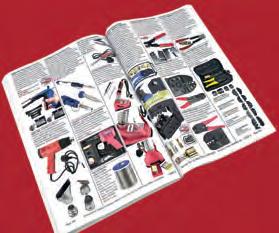


































You know the deal by now. Moving over to electric car is a necessity. You might agree for the sake of the planet or you might think it’s all a big scam and they’re actually worse but the government has spoken and that’s that. The industry is getting more and more electric with each new model and all you can do is rant angrily on social media.
If there’s one vehicle among all of them that’s guaranteed to wind up those with a child-slavery-in-Bolivia-or-something stance
on EVs, it’s the Lotus Eletre. ‘Simplify then add lightness,’ said Lotus mastermind Colin Chapman, and EVs are heavy. Not only that, it’s an SUV. An SUV! Blazes…
Chapman also said something along the lines of ‘adding power makes you faster on the straights. Subtracting weight makes you faster everywhere.’ And here we are in a Lotus SUV with, get ready for this, 905bhp. Not a misprint. Nine hundred and five. We’re pretty sure this is the most powerful production 4x4 we’ve ever seen,
and aside from the occasional billionairelevel hypercar it must be among the most powerful cars full stop. It has 905bhp, and 726lbf.ft, and it weighs 2640kg. Not a great deal of lightness added there, then.
Of course, Chapman honed his philosophy in the 1950s. As a matter of interest, he built his first car in 1948, the same year as another SUV maker we know. And back then, you could simplify and add lightness in ways you can’t now. A modern road car has to be loaded with so much in



the way of driver aids, safety structures and so on, it can’t help but be complicated, and whatever your opinion on EVs there’s no denying that for now, at least, the hardware they run on is heavy.
That’s all preamble, anyway. The market wants SUVs, so if you’re the likes of Lotus and you want to keep on making sports cars for the purists who adore you, spinning some turnover out of an SUV means you can keep on doing it. It’s already about a quarter of a century since they had that

head of a sweeping, alcantara-clad floor console, is a screen that’s definitely not little (nor frenched in) which takes care of all the usual media stuff. It’s crisp and sharp and, from what we could tell in an all too brief test drive, easy to navigate your way around.
All the displays in front of you are digital, and there’s a prominent strip of LED mood lighting to add a futuristic character to the physical body of the dash itself. It’s not as knowingly motorsporty as the cabin in the Lamborghini Urus, more space-age in its styling. You don’t half focus when you’re on the move, but sat stationary in it you feel as if you’ve been to a motor show and escaped with one of the concept cars.
It’s not just eye candy, though. We mentioned the floor console a moment ago and it’s like part of the chassis, it’s so big and stout. Actually it’s like part of Waterloo Bridge, it’s so big and stout, but you get what we’re on about.
same awkward conversation in the Porsche boardroom, after all. Oops, more preamble.
So we have a Lotus SUV, and all the legislation said it basically had to be electric. The stats are completely bonkers –but what’s it actually like?
Very, very high-tech is the first answer. You climb in, you check your mirrors and instead you find yourself looking at a couple of little screens frenched into the doors that relay the pictures from a pair of rear-facing cameras. In between, at the
The main part of its volume is taken up by a cubby box with twin side-hinged doors which open to reveal a space so large, an estate agent would call it a double bedroom. The rear seats can take a couple of adults if the ones up front aren’t too greedy, and the boot is big enough to take most of the things you’ll ever want to put in it, even if a sloping rear roof means you don’t get the same height for cargo as you do in a station wagon. The door pockets are good and big, should the cubby box somehow not be enough, though we never did work out how to open the glovebox.
What we did work out was that silver and gold still don’t go together, the same way they’ve been not going together since the

dawn of time. Most of the metal bits in the cabin are finished in polished alloy, which looks great, but there are a few buttons including the gear selector at the front of the floor console which have a polished gold effect instead and the result is like something you’d see in a badly thought out duty free display. It’s not the end of the world, or of the Eletre, but it would have been so easy to harmonise all these parts.
Bad seats certainly would be the end of the world, but the Eletre’s are very comfortable indeed. The leather covering most of their surface actually doesn’t feel all that soft and supple, but the seats themselves hold you securely in place while you’re nailing apex after apex with the aid of a very sporty, flat-bottomed steering wheel.
Which brings us to the real reason you buy a Lotus. It’s because few brands ever have had a more unsullied reputation for dynamic brilliance.
Now, dynamic brilliance and a 2.6-tonne kerb weight tend not to go together. And with a 0-62 time of 2.95 seconds (seriously, 2.95), it would be easy to assume that the Eletre is basically a bit of a hot rod. Not that there’s anything wrong with hot rods, but if you want to go round corners your money is better spent on something that can.
And the Eletre can. Its acceleration from a standing start is remarkable, of course. But more so is the way it takes off from higher speeds – including very high ones. You pull out to overtake a dawdling van and before you know it, a mid-range eruption has

sent you hurtling into the middle distance. Even from a typical motorway speed, you plant your foot and the back squats down as the motors fling you savagely forward. Lotus quotes 165mph for the top-spec Eletre R; the days when EVs could accelerate like mad but ran out of urge at around the same point as an old Allegro are behind us.
We should point out that the R is the really fast one, but you can also get the Eletre and the Eletre S. Both of these have 603bhp, 524lbf.ft, a 4.5-second 0-62 time and a 160mph top speed, so they’re not the fast one but they’re sure not slow either.
Anyway, we were about to talk corners. This is where the Eletre really delivers, because


its steering is pin-sharp and its multi-link air-sprung suspension controls its body with masterful precision. Even on really bad roads, where you can feel the suspension working at its limits, you can position the car accurately on the way in to corners. Its body crouches slightly but mainly stays flat, seemingly glued to the road. Lotus talks about its ability on low-traction surfaces such as gravel, which we can’t yet comment on, but as a B-road weapon it’s absolutely top-drawer. Its brakes are commanding, its balance and agility are thrilling and the
acceleration you get as you slingshot out of corners makes your jaw drop. It might weigh more than an old-shape Defender 130 but it’s a dynamic masterpiece.
The only thing the Eletre lacking in this respect, indeed, is the soundtrack to go with it. You don’t want to be messing around with fake noise, so praise be to Lotus for not going down that particular dark alley, but a spine-tingling engine note lends so much to the sense of occasion you get in a fast car. We’ve driven enough performance EVs to know you get used to it, but in something as extreme as this the drama of a howling V8 is that bit more keenly missed.
Otherwise, in terms of performance and handling the closest comparisons we can draw from the SUVs we’ve driven are the Urus and the Porsche Cayenne Turbo GT. The Eletre is arguably a driving machine on the same level but it doesn’t feel quite as exciting, doesn’t quite put the same silly grin on your face, and the lack of a banshee soundtrack is why.
Taken on its own, though, the combination of sheer pace and dynamic brilliance can’t help but make you love it. Plugging it in to your wall box when you arrive home and waking up to find it fully charged is sure to make you come over all warm and fuzzy, too, as will a 10-80% time of just 20 minutes at a 350kW rapid charger. Those EV haters on social media guffing on about sitting around for hours in a service
station need a shot in one of these things to bring them up to speed.
It could well be that the Eletre offers more performance per pound of running cost than anything else ever made. That’s not factoring in depreciation, which has been a killer for a lot of top-end EVs, but we don’t mind betting these will hold their value better than the higher-volume alternatives you can get for a similar price.
Price. That. We compared the Eletre to the old-shape Cayenne Turbo GT and Urus; the former is off sale now, but both cost an awful lot more than what you’ll do on this Lotus. The base-spec Eletre costs from £89,500, with the S costing £104,500 and the ultimate R, as tested here, pushing it to £129,950. Not cheap, no – but for this much performance and presence, not to mention luxury and everyday usability, we can’t think of anything that beats it. There are better vehicles, perhaps – but not a lot can deliver this level of dynamic thrills in such a visually thrilling package without it costing more than your house.
So there you go. Lotus is doing electric. Time to go and rant on social media about what a scam it all is… while your fellow Lotus fan is marvelling as how well they’re doing it. There’ll always be a place for simplifying and adding lightness – but when The Man says you can’t do that any more, the Eletre is winning proof that Lotus had an electrifying Plan B up its sleeve all along.















Isuzu has been making a very big deal of the potential its D-Max pick-up offers for outdoor adventures. Quite right too, because few things could be healthier than getting out there into the big wide world aboard a truck that’ll get you there. Hence the Basecamp, a concept truck designed to illustrate the opportunities put your way by Isuzu’s alliance with ARB. It’s based on an AT35 model, which in turn shows off the company’s alliance with Arctic Trucks – to be honest, you don’t really need 35” tyres on an adventure wagon, nor do you necessarily even want them, but it looks fit and it’s a concept vehicle so that’s what it’s there to do.
The AT35 part of the vehicle is pretty familiar, as is the fact that it’s based on the range-topping V-Cross model. So we’ve cruised up to the Lake District in great comfort, surrounded by all the luxuries, and now we’re going to make the most of the ARB stuff. This includes an Ascent gull-wing canopy containing a Zero fridge-freezer and Slide Kitchen, the latter giving us a threeburner gas stove and collapsible sink to play
up top.
This was to be home to the editor’s son, while he himself larged it in a ground tent next door. You wouldn’t believe the amount of trouble we had booking a pitch for this arrangement – proper ‘computer says no’ stuff – but we finally got ourselves fixed up and having raided a shop in Bowness we arrived just before dark and started getting our tents ready.
This involved a), undoing three clips, popping the top of the ARB rig and pulling down a ladder, which took about half a minute, and b) wrestling for about an hour with a pig’s breakfast of canvas and poles that was clearly out to get us, then bending tent peg after tent peg on a layer of shale about two inches beneath the surface.
Did we mention that it had started raining just as we arrived? You know what they say about the Lake District – if you don’t like the weather, give it 15 minutes. So we did, and sure enough 15 minutes later the rain got heavier, then 15 minutes after that it went from heavy to torrential and at some point
as the evening went on it started blowing a gale. Without any pause in the rain.
Finally the ground tent was up, looking less like a tent and more like a broken camel, and the editor climbs wearily up to find his son happily sitting in his ARB palace wondering what all the grunting has been about. He opens the flap and climbs in, taking about a gallon of rainwater with him which immediately saturates the front of the mattress, and they enjoy some bonding time over a dinner of cold snacks (no way was the kitchen coming out in these conditions) before getting a very early night.
Comparing notes in the morning, the ed has not slept a wink. But editor junior is nicely rested, if a touch chilly, and wants to know what’s for breakfast.
Which goes to show that the view from up top beats taking the low road. Camping is meant to be a pleasurable experience, but on this occasion it was about minimising the misery – and the Basecamp certainly did that for its young guest. Leaving the editor to try and dry it out. At least he got to enjoy driving it there and back…




Land Rover used to describe the Range Rover as ‘the king of the off-roaders.’ They might still for all I know, but they’re more likely to see it as the trending influencer of off-roaders nowadays, or the rising star of that thing on Netflix of off-roaders.

After all, in a world where the Evoque is now promoted on social media as being ‘shaped by the city’, what chance do mere kings stand against an army of modern go-

getters? Today’s Range Rover is for glittering success stories who want the world to know how successful they are. It’s big, it’s showy, the salesman said something about breadth of capability, yah, but mainly it’s fabulously expensive, darling, and look I’ve got one so I win.

To be terribly British about it (and terrible is the word), the new Range Rover is New Money. In the days when it was the status wagon of country squires, the original was





very Old Money indeed but somewhere along the line the king turned frightfully vulgar, left his Purdey sidelock in the palace and started turning up to grouse shoots with an AK47 instead. If nothing else, what the Range Rover says about you nas its owner now is very different to what it said about you then.
Perhaps it’s because wealth and taste have less in common with each other now than ever before. Perhaps it’s because so






many of the world’s most conspicuously rich people also appear to be the most conspicuously egregious, dishonest and/ or downright criminal. But traditional status symbols like chintzy London homes, Cotswold bolt-holes and very expensive cars impress people less than ever – indeed, rather than admire you, people are likely to see them and give you the sort of wide berth they normally reserve for Big Issue sellers. And that, like it or not, is what a







The new KSR from Kingsley Re-Engineered is priced higher than even the top of the new Range Rover line-up. But with one of these remade Classics, you’re getting something no ordinary vehicle can provide Words Tom Alderney Pictures Kingsley Re-Engineered



of the new model costs – on a top-end example of a rebuilt classic.





quarter of a million quid’s worth of brand new Range Rover gets you from a large chunk of the population.
Happily, there is another way of spending big on a Range Rover. The sort of people who compile pointless memes about footballers’ cars will never notice you – but people who know what they’re looking at will nod with admiration. Because with the arrival of the Kingsley KSR, you can now spend the sort of money a top-end example



There’s rebuilt, of course, and there’s rebuilt. Enough to pass the MOT and last for a few years before needing rebuilt again might cost you ten or fifteen grand. Fully restored might be four times that. Add some fancy stuff and if it’s done professionally, six figures won’t be far away. But then there’s Kingsley Re-Engineered – a company which remakes, renews and replaces everything about the vehicles it works on, down to the last detail, the result being Range Rovers which are brand new in everything bar their identity. The company builds Classics to






a modern standard – and the KSR takes that standard to a whole new level. ‘The most superior Kingsley ever conceived, it features a set of overhauled and redesigned premium interiors, delivering a modern experience while retaining some of the beloved features of old. Traditional buttons and synonymous Range Rover Classic features remain as part of this beautifully crafted yet sympathetic redesign.’
Kingsley already offers the KC and KR Series Range Rovers. Both are fully remanufactured however the former remains in original, unmodified trim while the latter adds various enhancements. The KSR, meanwhile, is a new programme allowing customers to specify a bespoke vehicle blending performance and luxury with the sort of equipment you only expect from brand new cars.
We’ll get on to that in a minute, but let’s start with the performance. The KSR comes as standard with Kingsley’s 4.6-litre High
Torque V8, whose 270bhp is backed up by 310lbf.ft at 3500 rpm. Paired to a version of the Range Rover’s four-speed automatic gearbox which the company optimises to suit the engine, this allows a 9.8-second 0-60 time and a top speed of more than 120mph. You might not have towing in your mind when you buy one of these (if you can afford one, you’ll already have plenty of other options in that area), but we can only imagine it would be masterful in front of even the heaviest trailer.
Should all that not be enough, the KSR can also be specified with a choice of LS3 or LT1 small-block Chevy V8s, again matched to optimised six-speed autos. Performance figures aren’t quoted, but the LS3 produces 430bhp and 424lfb.ft as standard and the more modern LT1 ups these figures to 455 of both. ’Small-block’ in this case means 6.2 litres; these engines can be tuned for outputs best kept to the drag strip, but in a classic Range Rover it’s the effortless pull and purposeful burble that matter. Safe to say that whichever engine you find under
the bonnet, the KSR will be potent enough to satisfy.
It will be agile enough, too. ‘Kingsley has co-created several specialist upgrades to enhance the driving experience, power delivery and overall enjoyment of its handcrafted vehicles,’ says the company. In this case, the KSR debuts its exclusive new TracTive adaptive suspension system, with pre-set controls that can be adjusted from within the cabin. Additionally, an upgraded brake kit ensures it can stop as effectively as it goes. Tyre sizes aren’t mentioned but there are various wheel options available, from the classic Rostyle steels to faux beadlocks and the inevitable Sawtooth.
That’s just one area in which customers get to choose how they want their Range Rover to look. Options include early-style or wrap-around bumpers at both ends, as well as a later style front unit with a deep air dam, vertically or horizontally slatted grilles and traditional or angel-eye headlamps.









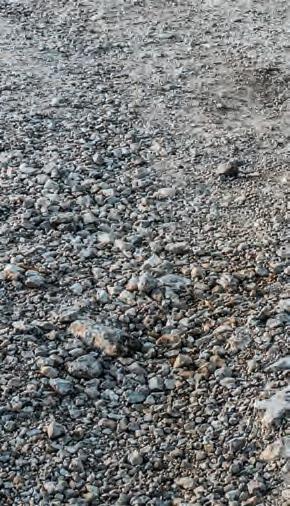


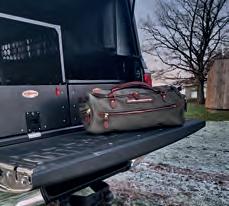


• Escape Gear
• ...and many more!
• Aluminium canopies
• Roof tents and roof racks




• Off-road fridges and 12v gear
• Drawer systems and slides














• Bumpers, side steps and vehicle protection
• Campsite essentials, tables and chairs



































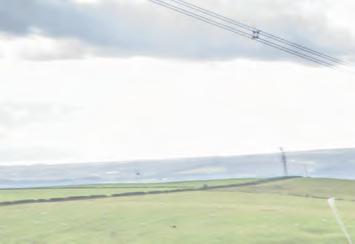





























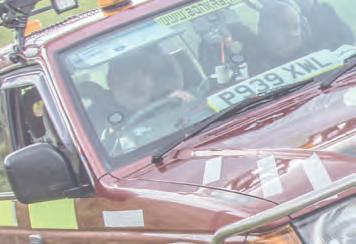




























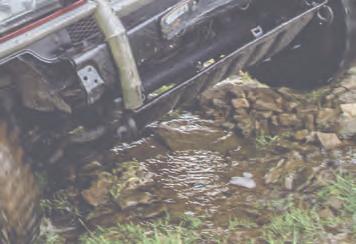




The Range Rover’s interior was elegant enough for its time, but had become dated long before the vehicle went off sale in the mid-90s – and it certainly didn’t have a reputation for ageing well. Kingsley’s treatment maintains the character of the original design while bringing it up to date with top quality modern materials, fixtures and fittings
Bumpers can be black or body coloured, too – you can even have your wheels to match the body panels, if that’s the world your notion of taste inhabits. And on the subject of taste, and choices, the configurator on Kingsley’s website allows you to choose literally any colour from the entire spectrum.
This is of course no different to the personalisation programmes run by prestige manufacturers like JLR itself. It does open up the potential for customers to order a vehicle in an ‘interesting’ colour scheme, but more relevant than that is the fact that all paintwork is done on site. This means every stage of the production process is

completed without the vehicle ever having to leave the Kingsley facility – again, a similarity to what you can expect when you buy a brand new one.
Something else you expect when you buy a new Range Rover is a cabin full of the latest tech. The same can’t be said about a first-generation one, however – but



The original Range Rover was just getting ready to go off sale when all the talk was of this new thing called the internet, but this is a Classic for the digital age. The control console in the front of the floor console includes an integrated Sony media unit supporting wireless Apple CarPlay, and the dash binnacle houses an entirely digital instrument panel – another first for the KSR
Kingsley had taken that in hand with this new model. The KSR is the first of its kind to feature a digital instrument binnacle and Apple CarPlay phone mirroring – as well, as a matter of interest, as a redesigned and modernised air conditioning system.
What you’ll find in the KSR is, in Kingsley’s own words, ‘an interior that screams modernity – yet keeping buttons and the special feeling of being in a Range Rover Classic.’ We’d suggest that such an elevated vehicle would never be heard screaming – gently burbling, perhaps, but in the case of the interior more likely just letting the standard of its craftsmanship speak for itself. You certainly won’t be screaming either, though you might purr a little.
It says something that Kingsley’s press materials for the KSR include not far off twice as many photos of its interior as its body. It looks splendid from the outside, whatever your opinion of the Sawtooths on the company’s demonstrator, but when you open the doors you’re into a different world altogether. The choice of finishes is almost as wide as that of the paint colours on the outside, but what really stands out is the precision and elegance with which the materials are used. This is a brand new design, introduced with the KSR; Kingsley says the vehicle’s interior is ‘crafted by world-class trimmers and automotiveoriented leather artisans’, which sounds like the sort of empty claim many a bolt-on bling artist has made but is thoroughly backed up by what you see and feel. The

combination of wood, fabric and leather creates an impression that’s at once classic and contemporary – we’re loath to use words like ‘timeless’, because we don’t want to be coming on like those guffy blingers ourselves, but that’s how it is. It looks aged but not dated, modern but not instant – and the standard of the fit and finish is OEM-plus.
The layout of the dash will be familiar to anyone who’s driven a first-generation Range Rover, with the classic layout of buttons for the fog lamps, interior light, cruise control, screen demisters and electric windows. That all sounds very random in this day and age, and perhaps indeed it is, but it’s so wonderfully familiar that to do away with it would be sacrilege. The familiar heater control panel is there, too – though this now operates a revised air-con system with new, wider vents. ‘This air-conditioning, a common weak point for most 90s-era Range Rover Classics, has been completely re-engineered and modernised to keep occupants comfortable in all weather conditions, with the new vents integrated into the dashboard enhancing climate control throughout,’ says Kingsley. Safe to say a good number of these will be destined for owners who live in warmer environments than we get in Britain…

These controls are housed in the familiar sloped panel at the head of the floor console, though this didn’t ever contain a bank of USB and USB-C ports when the Mk1 Range Rover was still on sale in main dealers. Apple CarPlay hadn’t been invented back then either, but there’s a screen neatly integrated above the heater controls – it’s not huge the way they tend to be on new vehicles now, but it’s from a well known source (Sony) and it provides a crisp, highres display. Phone pairing is done wirelessly, as you would expect.
‘The KSR represents a significant investment in Kingsley’s future,’ comments the company. ‘It will lead the way for future customers to enjoy a modern yet quintessentially British Range Rover Classic, that keeps all the charm of the iconic vehicle, with modern touches to make sure it’s a companion for everyday life.’
It’s approaching a year since Kingsley’s take-over was completed and it became part of a larger automotive empire under the management of John Sawbridge. The launch of the KSR follows the advent of a Defender model (see our Winter 2025 issue) and there’s also the promise of a new Series line coming soon.

‘The KSR represents a monumental leap forward, harnessing the unparalleled expertise of our extraordinarily talented 21-strong team and collaborating with the industry’s top-tier supply partners, all while answering our customers’ wishes and requests,’ says Sawbridge. ‘We’ve completely modernising the Range Rover Classic without compromising an ounce of its timeless charm or beauty.
‘We firmly believe this to be the best and most thoughtfully re-engineered Range Rover Classic in the world. This is a true statement of intent from us for future builds, and it shows our dedication to creating vehicles that honour the past while
embracing the future, ensuring each new model is even better than the last.’
With a starting price of £220,000 plus VAT, or whatever purchase taxes are relevant in the client’s home territory, the KSR is priced at the top end of the spectrum for even a brand new one. But aside from the fact that both are Range Rovers, the resemblance could hardly be more distant. People might look at you in one of these unique Classics and envy your wealth, but no-one will ever sneer at you for having earned it on YouTube. This is Old Money in the most British of ways. You can’t buy taste – but with one of these in your collection, you’ve already got it.










UK’s leading Independent Original Equipment Manufacturer (OEM) of propshafts & distributor of components. For the majority of 4x4 vehicles we can offer an upgraded propshaft option, whether you need greater angle, longer splines or larger torque capacity (which may give increased potential life-expectancy). Why choose “Extreme?”



Wide Angle Operation - Double Cardan Joints - Heavy Duty Universal Joints Upgraded sliding assembly - Higher Torque Capacity - Heavy Duty Tubing www.baileymorris.co.uk •






























We don’t get the Jeep Gladiator in Britain. But all the kit exists to build a replica of Jeep’s High Top concept. Time to start looking at bringing one in yourself, then…



In Britain, we have rain and the M25. In America, they have Moab and the Jeep Gladiator. It’s not fair.
We’re well used to not being allowed anything nice, of course. At least we do get the Wrangler (not the Rubicon 392, obviously) but we only get to look at the Gladiator and wish.
In the case of the Gladiator Rubicon High Top concept, we look, we wish and then we look some more and the wishing turns into dreaming and then eventually it all gives way to crushing disappointment. It’s magnificent, it can all be done via the Jeep Performance Parts catalogue… but you live in Britain. Behave.
You can get grey-imported Gladiators in the UK, if you’re prepared to spend more on a three year old one than the Americans get them for new. Probably cheaper just to buy a house over there and have it as your Stateside runabout.
Anyway, grey import or otherwise there’s nothing at all grey about the High Top. It’s finished in Ginger Snap metallic paint, with black graphics giving it a delightfully retro two-tone appearance. You’d notice it even if it wasn’t riding high on 18x9” Satin Black KMC Grenade Crawl beadlock wheels wrapped in 40x13.50R18 BFGoodrich AllTerrain T/A KO3s.
So this is a serious bit of kit. It might have hot rod level paint but it’s an off-roader with all the attitude of a battle scarred challenge truck. It’s even running JPP flat fender flares at all four corners – a concept at this stage, says Jeep, but we know how common it is for those to start life on a Moab show truck and end up selling like hot cakes out of its accessories catalogue.
Those big BFGs are bolted to the ends of a pair of Dana 60 axles running 5.38:1 diffs. That’s a step up from the Dana 4x4s that are standard on the Rubicon – you want strong when you’re running 40-inchers, after all, and these are STRONG. They’re turned by the 3.6-litre Pentastar V6 (or the late, lamented 3.6-litre Pentastar V6, if you live in Britain), which has slugs out the sort of low-end torque you want in a rock rig. The familiar TorqueFlite eight-speed auto and two-speed transfer case means this truck will keep moving, under complete control, at insane angles and barely perceptible speeds. It might look like a Tonka toy built to rumble over everything but as we all know, at real


There’s nothing wrong with the standard Rubicon seats, but these ones have been retrimmed in custom quilted and perforated tan and black Alea leather and there’s definitely not anything wrong with that either. The pedal kit, all-weather floor mats and door sill guards are all from Jeep’s own JPP accessory range, too
would in a lesser truck, with all the fun and games that brings. And besides, there’s always the other guy. And he’s far more likely to need rescuing.
Vehicles front bumper mounted with a Warn Zeon 10S winch. That’s the one with synthetic rope, hence the hawse fairlead you see surrounded by about a million LEDs. The bumper looks more subtle than some of the aftermarket stuff you see, and the same off-road speeds you move slower than the sun in the sky.
With all this capability underneath it, we can’t imagine the High Top getting stuck all that often. Though of course it means you can push the limits further than you
Happily for said other guy, then, the High Top packs a modified American Expedition

goes for the rock rail power steps from Rock Slide Engineering – there’s not much call for nerf bars you can use for doing tree turns when you’re ‘wheeling on raw slickrock, but protecting your skills, doors and body panels is definitely a thing out here.
Talking of doors, the High Top has some. Four, in fact, going all the way up to the waistline. All the better for letting people see inside, and thus for showing off the quilted and perforated tan and black Alea leather seats in which you’re casually lounging your way up Chewy Hill or Rocker Knocker.
No, I wouldn’t inflict obstacles like that on such a pretty car either. I don’t doubt it would conquer them, but it would probably ship some damage on the way and that would be a shame. Too nice to trash, and all that. You want people to be looking at those embossed JPP logoed seats and admiring the JPP Sun Bonnet stretched above

The Gladiator comes as standard with Dana 44 axles, which are good and strong – but when there’s a set of 40” tyres going on the end of them, nobody ever got fired for upgrading to Dana 60s instead. The diffs inside them are running a 5.38:1 ring and pinion – try using a ratio like that on the standard tyre size and things are going to get very revvy very soon
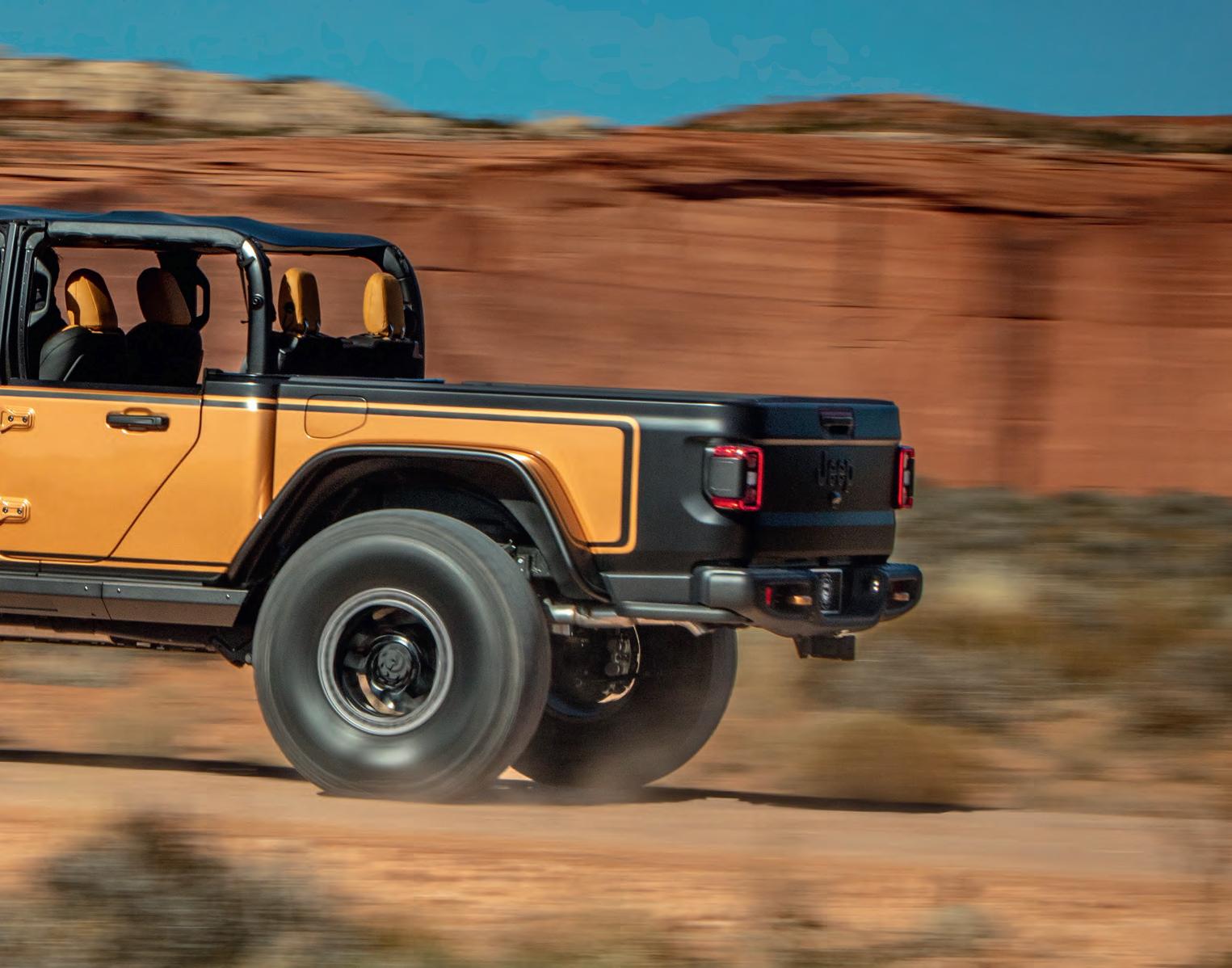

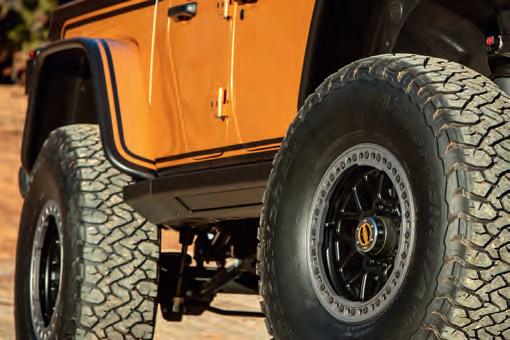
Left Warn’s reassuringly high-end Zeon 10S winch is mounted up on a modded bumper from American Expedition Vehicles. Those recovery points are for more than just being seen – and while the huge array of LEDs around the Gladiator’s front end are for exactly that, or at least for seeing as well, when darkness falls and you’re still on the trails they could be a lifesaver
Right: Rock rail power steps from Rock Slide Engineering protect the sills and doors from the sort of rock hits that are inevitable when you do Moab on 40s and you want to have fun. They protrude further than this picture shows, without quite being the full nerf bar design the way you’d want among the tight trees of a perenially damp British woodland
you, not wincing at the deep gash some awkward rock has carved in your doors.
The cabin also features a JPP pedal kit, all-weather floor mats and door sill guards, but if any onlookers are able to see these you’ve probably run over their foot. On the plus side, if it’s on one of those rocky trails you ought to be running such low pressures they might not even notice. But of a risky one to be finding out for yourself, though.
Still, if you’re going to get run over by anything, like the many grateful victims of Hong Kong Phooey you might consider it a bit of an honour that this big beast chose
you. It’s not just a Gladiator, after all, it’s a Gladiator among Gladiators – in fact, an acquaintance who specialises in writing about Jeeps and nothing else reckons it’s the best prepped one he’s ever seen.
Enough to get you wanting one over here on the side of the Atlantic where we’re not allowed anything nice? Well, if you don’t get a buzz from this Jeep you’re either looking in the wrong place or you’ve already got something on your driveway that’s so nice it ought to come with a health warning.
So we look, we wish and then we look some more and the wishing turns into
dreaming. But maybe, just maybe, instead of giving in to the disappointment, someone in Britain will look at the High Top concept and decide that they’re going to do something about it, and one of those grey imports is going to emerge in a Ginger Snap glory coat and rocking a set of 40” All-Terrains on Dana 60 axles. We can’t help but shudder at the thought of how much it would all cost – but if you’d sooner spend it on a truck for the ages than an SUV for the polo club, here’s proof that Jeeps can still be modded into some of the coolest cars on the street.

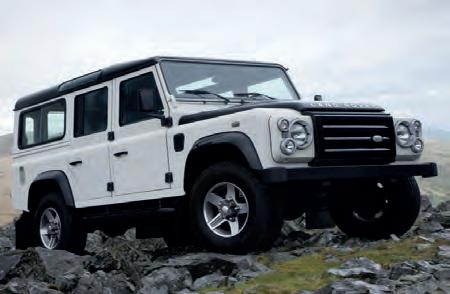












































Hybrid building is traditionally seen as a way of creating a vehicle for much less money than a ‘real’ one would cost you. But the creativity in the world of mongrel motors goes far deeper than just that…

Chucking two cars at each other to make a mongrel is a timehonoured tradition among the world’s petrol heads. Us lot in the off-road game sometimes assume we’ve got a monopoly on it, because Land Rover owners were at it non-stop in the 1990s, but it goes back much further than that. And prolific though they were, the Landy
mob certainly don’t have the monopoly on building DIY off-roaders from the remnants of vehicles past.
These days, unless you specifically want a 100” Land Rover, hybrids no longer make financial sense. Put the same time and money into restoring a 90 or 110 and you’ll have a vehicle that’s not only better, it’s worth much more if you decide to sell it.
That’s not why you build a hybrid, though. You do it because you want a vehicle that’s unique and has your own stamp on it. A vehicle like the one you’re looking at here, for example.
It’s the work of Mark Ackroyd, and at first glance you’ll no doubt be able to identify it as some sort of Jeep. That’s easy. It’s an old one, obviously, but it’s an old one that’s


been skilfully done up and made to look very groovy indeed.
That only scratches the surface, however. See, it all started when Mark found himself in possession of a Wrangler TJ with good chassis and running gear but a badly rotten body.
If you’d been there at the time, his previous 4x4s might have provided a clue




as to what was going to happen next. They include a Toyota F50, which he rebuilt, and a Daihatsu Fourtrak 2.8 TD – which he fitted with the body from a Mahindra.
You may or may not remember the Mahindra. It was an Indian version of the old CJ3 which was imported into the UK in
the early 90s. It was a pretty ghastly thing to drive, if truth be told, but it looked fantastic – even back then, in the days when there was no such thing as soft-roaders to offend your eyes, its retro appearance was enough to put a smile on the face of any 4x4 fan. So long as they hadn’t ever owned one.
What could be better, then, than replacing the rusted-out body of a relatively modern TJ Wrangler with what’s basically the one good thing about a Mahindra? The obvious answer is that if they’d both had the same wheelbase, that would have been better, but Mark’s a man who loves a project so while





















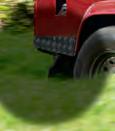
































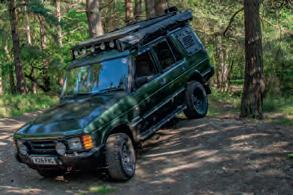


























































































As standard as it’s possible for anything to look in an engine bay like this, that’s an original 4.0-litre straight six Jeep lump you’re looking at. It’s a tight fit, but even then the bonnet had to be extended to get it all in. The answer to your next question is ‘Dixie’… but whatever your views on how that may sound, the good news is that at least the exhaust makes a noise you’d be happy to hear over and over again. Air is routed in through a snorkel, but that doesn’t mean Mark was going to be drowning his truck in five feet of water for laughs

it might have been easier, it wouldn’t have been anything like as much fun.
Underneath, it’s basically a completely standard TJ. But Mark started the project by stripping it down to a bare chassis – whose main rails he chopped by 8” before prepping it for the rebuild.
That went some of the way to bridging a 20” gap in lengths, so it won’t take much in the way of maths know-how for you to figure out that there was another 12” to go. Mark added this to the body by extending what would be the door aperture, if there was a door, fabricating it piece by piece to fill in a complex gap without messing up the vehicle’s original appearance in the slightest. Take a look, and another, and another, and unless you’re some sort of Jeep expert (or anorak) you’ll never spot
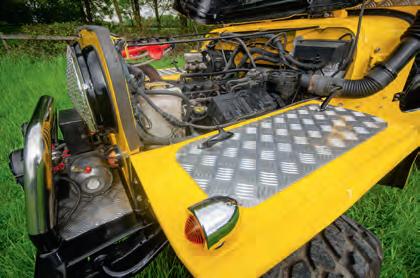


It
taken some working out, but it’s been done well –
coming from the transmission means he has to drive



You could turn a hose on this interior after a monster session in the mud, but that’s not what it was made for. It may be basic and old-style truck-like in there, but the detailing and standard of finishing tells you that this is a vehicle built to make an impression. Bucket seats and four-point harnesses sit behind a military-era dashboard featuring a sensationally eye-catching chain-link steering wheel, and the construction of the compound chequer-plate floor is beautiful. The same could be said of the colour-coded petrol tank, which lives where the rear seats would be – Mark admits that if he was doing it again, he’d make it a four-seater
that this is anything other than a factoryfresh body you’re looking at.
One thing you will spot is that it’s more than just your average off-road build. Mark has taken his truck out to play, and reports that performed well in the mud, but that sparkling paint and brightwork isn’t the stuff of tree-scraping lane battles or non-stop baths in grimy water.
Earnest off-road mud-soldiers shouldn’t dismiss it out of hand, though. We all know how cool it is to pose around town in a truck that looks like it’s recently emerged from a jungle (or in this case, maybe more like some sort of off-road computer game), and Mark’s vision for the vehicle simply played on that.
There’s more to it than just a great paint job, too. Here and there, you’ll see details that are the stuff of show cars. The handmade chain-link steering wheel, for example, which was all Mark’s own work, and a shovel attached to the side panel – on the nearside, of course, so passers-by can see it. The cabin is every bit as utilitarian

and minimalistic as you might expect, but it’s far better presented than you almost ever see in hardcore off-road trucks, from the multi-piece chequer-plate flooring to the colour coded fuel tank behind the seats.
The same standard continues on the outside. Where most would have a pair of rock sliders looking brutal and uncompromising, Mark has stainless steel side rails you can see your own reflection in. And at each end of the truck, the bumpers (made by Mark himself from a girder at the front and scaffold bars at the back) have a finish so deep it feels like you could reach into it.
Much of this is the sort of stuff you’d expect to see on slammed Volkswagens running hydraulic suspension. But low is so not the way to go when you’re building a 4x4, even one that’s not really made to get muddy. Hence the 4” suspension lift Mark installed, along with a similarly significant hike in the length of the body mounts –which, of course, had to be fabricated anyway as the body and chassis were never meant to go together.
All this leaves plenty of clear air above the tyres with the suspension at rest.

Left: Off-the-shelf bumpers for Mahindra-TJ hybrids aren’t exactly the most common thing in the world. In fact, they don’t exist. Not a problem, though, when you’ve got access to a bit of old girder and you know just what to do to it.
Right: The rear bumper is a one-of-a-kind design, too. That kind being Mark’s own, obviously – the main runs of tube started life as scaffold bars. The twin-exit exhaust between the two bumperettes is pretty cool, too
Certainly, a Jeep with a big lift should be capable of rocking a much bigger fitment than the 31x10.50R15s it’s wearing, and it’s


hard not to try and picture how cool it would look with a set of 35s or more under there. Again, though, that’s not what it’s about –and you certainly can’t imagine Mark getting in among the rear arches with a grinder now he’s got it looking this good.
As it is, the 31” rubber gets close enough to fouling with the suspension on full bump,
and with the Mahindra body being so much narrower than the TJ’s axles there’s no way of adding space without getting violent –which is surely less than such a beautifully turned out little truck deserves.
And Mark wouldn’t do it differently if he was giving the project another go, in any case. When asked what he’d change about
The TJ isn’t what you’d call a long vehicle, but the Mahindra body is a whole lot shorter. Thus the chassis has been cut by 8” and the body stretched by 12” – Mark extended the side panel beneath the door aperture to create the extra length. As you can see here, there’s a lot of lift in the body mounts – Mark says they’re the modification that’s worked best, which is praise indeed considering all the others they’re up against
it, he says he’s have done it as a four-seater, but that’s about it.
‘I just love building 4x4s,’ he explains. And looking at this gorgeous little truck, his devotion to the cause shines through. Building mongrels is a time-honoured traditon – but seldom can the results have been as pedigree looking as this.
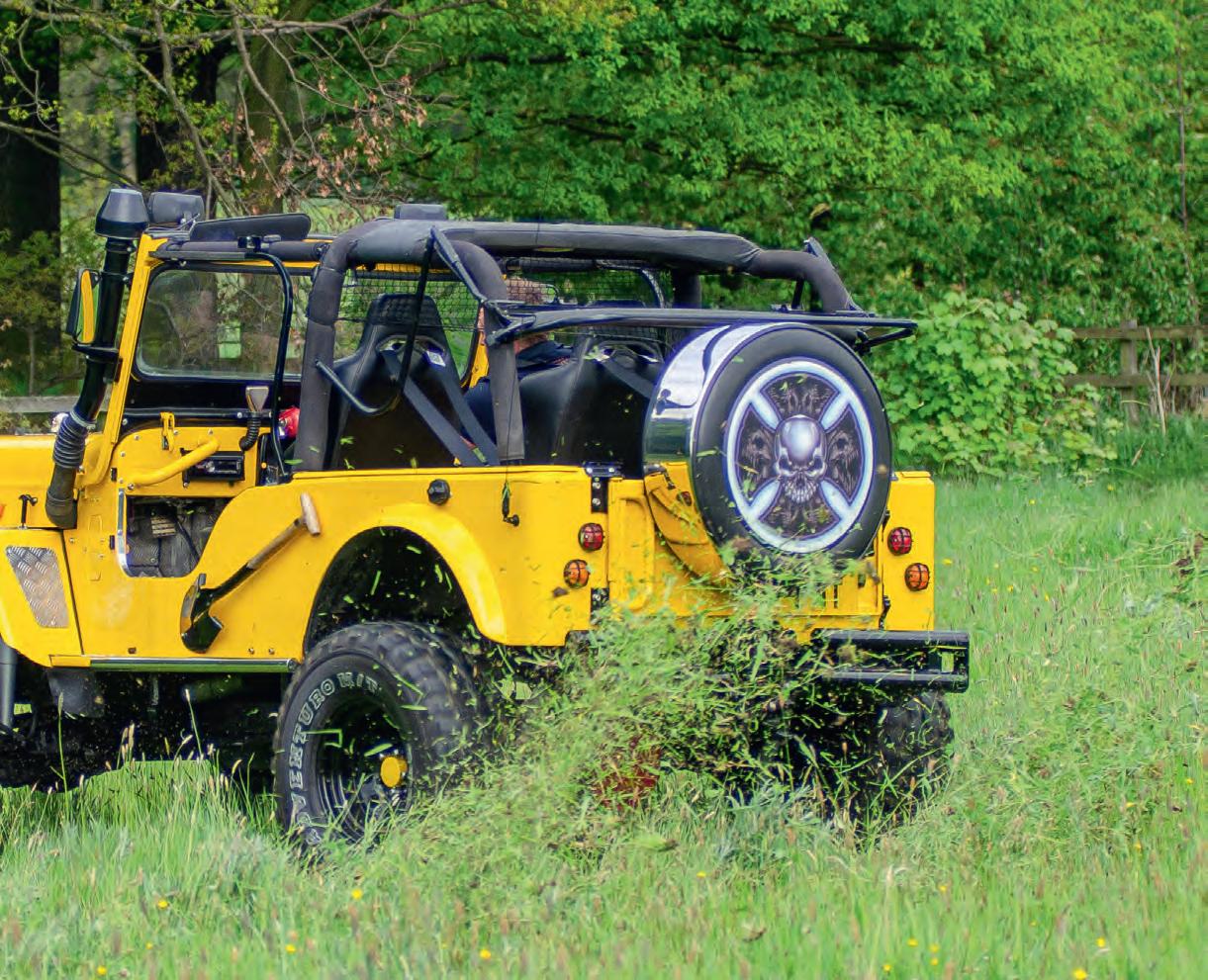






A 4x4 with a tent on top is a classic image of overland travel. But if the time comes when you want a more comfortable living experience, the same kind of 4x4 can still provide the perfect answer
Words Olly Sack Pictures Michael Troup





When you’re prepping a vehicle for overlanding, you have many choices to make. Some are very basic – like which make and model you’re going to start with –while others are right down in the details of the plan. But one of the most fundamental is whether you’re going to live out of it – or in it.
A classic overland rig might have two seats up front, a tent on the roof and an arrangement of pull-out fridge and kitchen sharing the back with a world of storage. But it’s becoming more and more common to see people turning 4x4s into of common to see people turning 4x4s into

compact motorhomes, with a rear box body containing a self-contained living area.
Michael Troup has experience of both. His first overlanding experiences came aboard the former kind of vehicle – but then with bigger trips in mind, he moved on to the latter.
‘For several years, we spent our holidays travelling, camping and seeing the sights in a Land Rover Defender 110,’ he says. ‘We managed to visit France (including Corsica), Spain, Portugal, Holland, Germany, Austria, Hungary, Romania, Iceland and Morocco.


‘The 110 did an excellent job of keeping us mobile in comfort. Yes, I really do mean



comfort! Over time, we did make a few modifications to improve it off-road, such as improved suspension and a locking diff, and easier to live from, like a hot shower and a better roof tent.
‘But I always had bigger plans. Around 2012, I had a conversation with a colleague from Uganda who persuaded me that it was a must-see destination. That gave me the idea of doing an overland route from Cape Town to Cairo, and the more I looked at the trip the more appealing it became.’
The years passed and Michael never got round to taking that trip, but he kept ticking off the classic European destinations. Then






Here’s where the story begins. Michael’s previous overland wagon was a Defender 110 Double-Cab with a hard-shell roof tent – very capable and comfortable, and it took him a lot of places, but you can only endure so many days without a shower and cook so many meals outside in the rain before starting to feel like this isn’t much fun any more

the summer of 2017 saw him exploring Romania – and, on the way home, stopping off in Germany to visit Custom Campers (www.custom-campers.de).
This is a company which specialises in converting 4x4s into motorhomes. As its name suggests, it’s well versed in the art of the bespoke – and this ticked a very big box for Michael, as he had a clear idea of what he wanted.

‘While travelling in Iceland, we relied on showers in the camp sites,’ explains. ‘That was a hit or miss solution as some of the national park sites only had cold showers, and a few had none. This meant we were travelling






convinced we would want a shower, toilet and fixed kitchen – otherwise we could just stay with the 110 and its roof tent.
‘Initially, I was thinking about using an Iveco Daily 4x4 as a base vehicle. However after seeing the space and civility Custom Campers achieved with a Defender 130, a plan quickly formed. The pop-top roof on a Defender is nothing new, but the body and finish were unique to them – and the cars we looked at which they had built proved it’s possible to fit a lot of nice-to-have things inside a normal sized 4x4.’



As it happens, there was a UK-spec, righthand drive Defender 130 sitting there for sale. But its layout wasn’t right for Michael, and he’s not a man to make do with second best for the sake of an easy life. Anyway, Custom Campers wouldn’t very much live up to its name by being inflexible – so Michael left with the assurance that they could create exactly what he had in mind.
As it happens, there was a UK-spec, right-


for. But then, several weeks later, there
All he needed now was a 130. ‘We stopped off in Blackburn on the way home (he lives in the north of Scotland). Sadly, it was a little more rusty than I was looking for. But then, several weeks later, there was another candidate in Sheffield. It was an ex-utility Defender 130 with a mobile


workshop rear body. Nothing fancy – no electric windows, no heated mirrors, no central locking, no air con, no cruise control. But it did come with a front winch and it had a solid chassis and bulkhead. It was in a good, honest condition and a deal was struck.’
Its gearbox wasn’t in great condition, however, and in Michael’s words the seats were ‘rather tired.’ But his plans ran a whole lot deeper than just sorting out whatever issues it threw up. ‘We had plans to keep the 130 for a long time,’ he explains. ‘So I decided to put maximum effort into keeping the rust away.

‘This meant a full strip down of the vehicle, followed by sending away almost every steel part for blasting, galvanising and powder coating.’ Cue a long list of late nights in the workshop as the whole truck was stripped down. The rear body was removed and put up for sale and the body panels were sent for painting – having first been stripped of the white vinyl wrap the previous owner had applied over the orangey red paint dating back to its days in the utility sector.
When the steel parts came back, looking as good as new, the rebuild could commence. There’s no better time to make modifications, of course, and safe to say






Michael had a few to add as the 130 went back together. Soundproofing from Wright Off Road, electric windows, central locking, heated mirrors, heated windscreen, air conditioning, new heated seats, additional front lights – you know, little details like that. All of which means the easiest thing to do was install another small mod in the shape of an additional wiring loom.
Talking of wiring, in went a split charge system along with an additional battery. ‘Of course there was still a lot of wiring to be done for additional kit like transfer pumps, air compressor and solenoids and cruise control,’ says Michael. Cruise control. This is serious. The winch had had an electronic limiter installed by its previous owner; with this removed, it was capable of a 12,000lb pull.
Mechanical stuff, meanwhile, included front and rear locking diffs, an air compressor, extra fuel tanks, a new recovery
Left: This is the 130 as Michael found it, with a utility body on its back chassis and a white vinyl wrap on top of what turned out to be an orange body
Right: And this is the 130 as you would have found it a while later. It was stripped all the way down to individual parts; almost everything made of steel then went away to be galvanised before the rebuild could begin
hitch and Fox shocks, as well as the gearbox and transfer case. Much of this was the result of lessons learned while building the 110; ‘The plan was to build the 130 only once,’ says Michael, ‘so it made sense to do all the modifications at the same time.’
Many of these parts came from Tomcat Motorsport, and Michael gives a big shout to Paul there for his part in the project. Safe to say he did more than just send boxes on the long road north.
‘Paul was involved heavily in the supply of all the Land Rover parts, including wiring,’ Michael explains. ‘He was also the first port of call for advice on the suspension. In the end, all the suspension components including new front turrets, 2.5” Fox shocks and new springs came from Paul, and that included calculating the required spring rates for the rear.
All of this was being done on a clock, as Michael had already booked a build with Custom Campers and he had a delivery date looming in the diary. Hence all those late nights. There was still time for some very cool details, however – including one which many an overlander might wish they had known about.

Sometimes, it’s the little things that make life much easier, and reading maps and finding things in the cab at night was much more pleasant with a red light.
‘I looked around and managed to find an interior light that does just that – and it was made specifically for the Defender. Great news!’ Better still, his other half took charge while he was away at work. ‘Claire made a sneaky purchase and installed the new interior light while I was away – and wow, what a difference. Even the white light is a big improvement on the standard interior light. Both colours are LED; it works in the same way as the original but you can switch from white to red. If you want to improve your interior lighting, I can 100% recommend the Mud Stuff LED interior lamp!’

‘I had spent some time driving an Iveco Trakker,’ he explains. ‘It had a dual colour interior light. One is the standard white and the other is red.
Elsewhere, several parts were replaced or serviced as preventative maintenance. An example was the fuel filter housing, which fell apart when Michael tried to remove it; on went a new billet milled version in its place. He fitted a new fuel pump at the same time as the old one was sounding tired.
Talking of fuel, when you’re intending to travel the length of Africa you’re going to need as much diesel as you can carry. So Michael bought a pair of stainless steel sill tanks which would add around 140 litres to the Land Rover’s capacity –however despite claiming to have been designed for a 130, they didn’t fit. ‘There were several problems with the brackets and disappointingly they couldn’t be fitted before the 130 went to Germany to have the
Here’s the 130 starting to go back together after all the parts had come back from being galvanised and powder coated. At this point, Michael had less than three months to go before he had to drive it to Germany for its date at the Custom Campers workshop

camper body made,’ he says. ‘There was a potential risk that the body would foul the tanks. Again, the guys at Custom Campers did a great job with limited info in drawings from the manufacturer.’
In general, however, the rebuild went smoothly. To check for fit, Michael and Claire had cleared a room in their house and marked out the proposed floorplan using electrical tape so they could be sure that there was enough space in the vehicle for everything and, no small matter, everyone. They made several trips to a local motorhome and caravan dealer to familiarise themselves with different layouts – there are places where they’d have been shown the door for this, but they’d obviously found someone who knows what they’re doing and it paid off when they went back
later on to buy a number of major parts for the interior build.
So it was all coming together, and now it was time to take the truck to Germany for things to REALLY come together. A quick test drive and… oh. The pinion bolt in the newly rebuilt front diff hadn’t been torqued up. Happily, the original was still sitting in Michael’s shed – not a job you want to be messing about with when you’re booked on a ferry, but better than something letting go on the way there.
So the truck was delivered and the guys at Custom Campers got down to business. ‘Despite a full work schedule,’ says Michael, ‘they were very good at sending photos and keeping us up to date with progress. They

made some very good suggestions on the interior and roof arrangement – for example we had the kitchen at the back of the car and with a bed length of two metres, that would mean there was no space to put a ladder up to actually get into bed! That was something we didn’t spot when planning the layout.’ A good illustration of the value of experience, there. So the plan was adapted and now the bed in the roof comes all the way to the front, above the windscreen –meaning it’s bigger in both length and width than a standard UK king-size!
The camper build, which took five months, was very much a two-way thing. As it progressed, it became apparent that installing the wiring would be best done using the cavities around the body which would no longer be accessible once it was

Two-tone interior LEDs are not the first thing you might jot down on your overland wish list, but they’re the sort of detail that turns a good build into a great one. With the lights set to glow red, jobs like reading and finding things are much less stressful on your eyes and therefore your mind – and red light doesn’t attract mosquitoes and other flying bugs, which is less stressful on every part of you you can think of

fully together. So Michael got back on to Paul at Tomcat Motorsport, who burned the candle at both ends to make up the looms and get them over to Germany.
It was a two-way thing in an even more literal sense, too. The idea was that with the body built, Michael would instal the interior before Custom Campers set the seal on it with the pop-top liner – for the very simple reason that it would be vulnerable to damage while all that work was going on.
This is where the room marked out with electrical tape came into its own. As did all that empty space in the truck, as Michael stopped off at Tomcat to pick up yet more parts on the way home from Germany.
He also paid a visit to the company that had supplied the sill-mounted auxiliary

tanks, so they could see where the brackets needed to be modified. ‘They had prefabricated some brackets that “should do,” so I handed them the keys and they took it to the workshop to fit the tanks. After a few hours, they returned with the keys and explained all was fine.’ You know what’s coming, right?
Next stop was at Scot Seats in Kilmarnock, who had been building a pair of legally approved seat-belted rear seats that would retain the vehicle’s ability to carry four people. The number of people who cut corners in this area, or take an ‘if I ever get nicked for it it’s because everyone on board is dead anyway’ approach, is frightening, but you’ll have figured out by now that Michael doesn’t think that way.
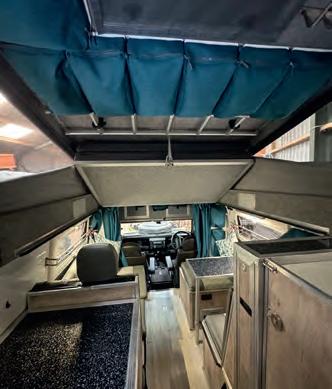
Michael discussed many things with Custom Campers before the build, among them the siting of three water tanks. The company left space for a 60-litre fresh water tank in the middle, flanked by two 40-litre tanks – a second for fresh water which can be isolated and used on its own for short trips, then one for grey water. There’s a fair bit of weight in all that – potentially upstairs of 140kg with all of them full – so siting them low down beneath the floor made sense for every reason you can think of. Michael had the tanks themselves made up from stainless steel and insulated the space before plumbing them in
Back home and with an Irn Bru or two on the go, Michael got back down to work. ‘Almost all the wiring, plumbing, seating and interior fittings were made and installed in the shed,’ he says. And the teamwork continued, too.
‘Claire was in charge of fabricating the interior. To keep it as light as possible, I decided the weight of the panels could be trimmed down by making them from polypropylene honeycomb instead of wood. Each panel was bonded together, cut to size, framed and installed by Claire, while most of my time was spend installing water tanks, pumps, filtration, the heating system, extra lights, CCTV and additional wiring.’
It was while Michael was investigating a problem with the rear lights that the auxiliary
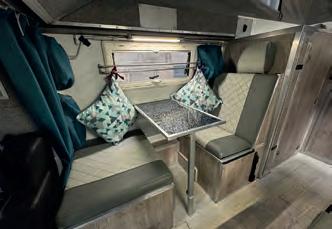

































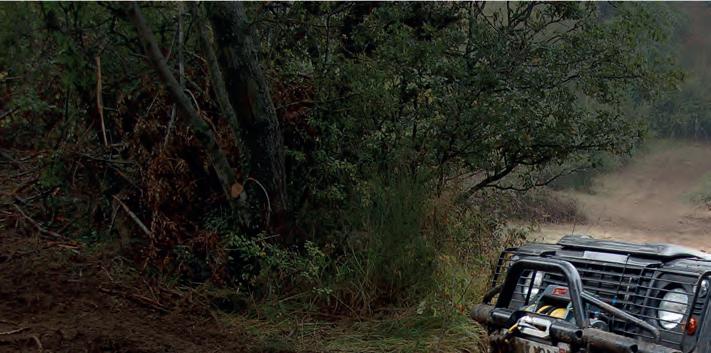





























Towing a comp safari racer is not your typical shakedown job for an expedition motor, but it was a useful one as it showed that the engine was less that excited about the task. Step forward the guys at Allisport, who had emailed a new map to Michael within an hour of him sending him the info they needed. With a Nanocom already on board, he was able to instal it there and then – after which the 130 pulled the 100” Tomcat with ease

tanks re-entered the chat. ‘I discovered two things,’ he says. ‘First, the brackets for the tanks were awful – poorly designed and very poor workmanship. Second, while fitting the tanks, the folks had drilled through the wiring loom that runs inside the chassis.’ Sometimes you don’t need dual-colour LEDs to make you see red.
As if to prove that it doesn’t need to be that way, the 130’s water tanks went in perfectly. ‘I wanted to keep all the weight of the water, which can be more than 140kg, as low as possible to aid stability. We discussed it with Custom Campers before the build and they made space under the floor. I had three stainless steel tanks made up and, having insulated the space, secured them under the floor.
‘I’m really happy with this solution as the fresh water tanks are split, so you can isolate the 60-litre tank in the middle and just use the 40-litre one if you are only going away for a short time. Then the 40-litre grey water tank is mounted to their left.’
Scot Seat, too, did a great job. The rear seats fitted perfectly, even taking into account the slight angle on the side of the rear body. The upholstery was spot-on and the seats came with a full fitting kit which included spreader plates, stainless bolts, seat belts and spacers.
As it turned out, the only way to get the seats into the vehicle was by craning them up and over the top of the body then

lowering them in through the pop-top aperture. Leaving that bit to last was looking like a better idea all the time…
By now, the water tanks were in, all with the appropriate filler and drain valves, the wiring was almost complete and the split charge, solar panels, external hook up, inverter and 240v wiring, battery charger and battery monitors were all fitted. The Webasto heating system was installed and working, too.
Michael dropped the truck with Custom Campers for them to finish the job and a few weeks later, it was done. There were still a few details to take care of back home but it was fully ready to be lived in and, as it happened to be not long to Christmas, they decided to spend a few days enjoying

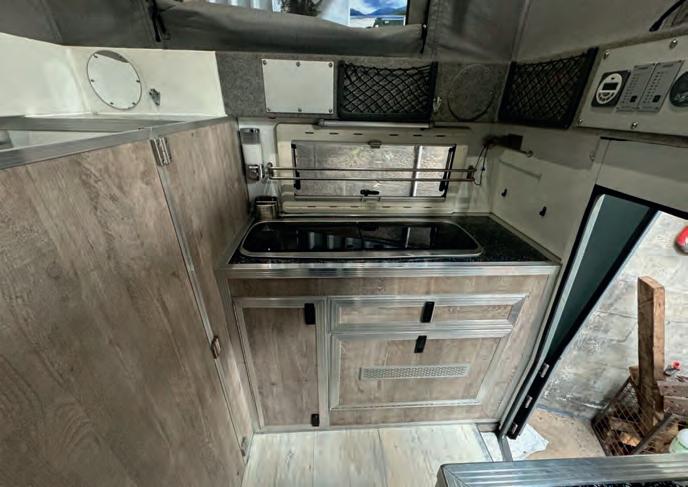

Having a toilet, kitchen and shower on board was what prompted Michael to start planning the 130 in the first place. Thanks to Custom Campers’ prodigious skills, not to mention his own efforts in the workshop and a refusal to do the job to anything less than the very highest standard, he ended up with a Defender-based motorhome fit to travel the world – and built to last well into the future
Dortmund’s Christmas markets before driving home.
‘This was the first time that we had both spent time living in the camper,’ he says. ‘We learned that the upstairs bed is big, with plenty of space – even in November, we were perfectly warm and only used the heating occasionally. It was really nice to have an area inside to shelter, relax and cook when it was raining, too.’
Michael admits that having previously been used to his 110 with its roof tent, using a hook-up cable to the camp site’s 230v mains supply took some getting used to.
‘While we had a large leisure battery and twin solar panels we also had a fridge and freezer running, in addition to the lighting and heating. We used the shower, too, so with not much solar energy coming in to top up the battery we were grateful for the hook-up facilities.’ Not that these things come free: ‘I think we used about one Euro for the two nights and three days we were parked up…’
Something else they learned was that you need to have all your own hoses and connections for filling your water tank.
‘Previously, we would just fill cans from petrol stations or find an outside tap,’ Michael admits. ‘However with the camper we needed to find a tap that we could drive to. The parking place had a water point but it was just a tap – we tried to find a solution with some of the spare parts and
the shower hose, but it wasn’t the most successful and I ended up getting soaked.’ Just in case he was getting nostalgic for the old roof tent days…
Something else they did for the first time was use the toilet, which involved first filled the flush tank then putting chemicals (ecofriendly, of course) in the main tank. ‘It was just another one of the things that made life easier,’ sys Michael. ‘If you have ever woken up in the middle of the night in a public area when camping in a roof tent and needed the toilet, you’ll understand how convenient it is to have one onboard!’
A few months later, Michael headed back down the road to visit Coolair Logan so they could finish off installing the air con. This used a slimline condenser, meaning he could keep the 130’s original grille and winch bumper, as well as the standard compressor used in Land Rover’s own air-con systems – meaning that if it lets go in the future, any Land Rover dealer or aftermarket seller will be able to supply a replacement.
You could call these shakedown miles, and sure enough they pointed up an issue. ‘At the same time I had arranged to collect a Tomcat 100 from Tomcat Motorsport,’ explains Michael. ‘With the shape of the body, the extra weight and the trailer, the 130 was somewhat slower than normal.
‘I had plenty of time to contemplate this problem on the 400-mile journey south, so
I dropped an email to Allisport who were excellent and gave me all the details that were required for a remap. I had a Nanocom in the vehicle and within an hour of me emailing Allisport with the info they needed, they had emailed me a new map and I had it installed and running in the 130.’ It worked like a charm and the big, heavy truck was now able to pull a heavy trailer with ease.
So now Michael and Claire had driven in it, towed with it, slept and cooked in it… all that was left now was for them to get up and go to Africa in it! Well, almost. As always with a project, the first experiences are the ones you learn from and even with a meticulously planned and professionally executed build like this there were always going to be finishing touches to be made.
These included some interior doors and panels, plus various aluminium grilles – some to ensure the heater fans had a supply of fresh air and others to protect the fridge. There was a kitchen drawer to make, too, and a slide for the freezer, and a short trip to Aviemore pointed up the need for additional clothes storage space on longer hauls. Michael also wired up the dump valve for the grey water tank and installed a Garmin inReach – a potentially lifesaving device which facilitates tracking and emergency communication from offgrid locations.
Talking of potentially lifesaving devices, Michael sent the Ramsey winch to the UK agent for a service. The next-day courier was in fact six-days-later, but BHW Group themselves were spot-on and checked, pull tested repainted, stickered and returned the winch within a day of receiving it.
Also with Africa in mind, Michael fabricated a bull bar to go on top of the 130’s winch bumper – which, like everything else, was galvanised and powder coated before being fitted. He installed a snorkel, too, as well as ordering up a set of BFGoodrich KM3 Mud-Terrains. ‘We were planning to take most of our six-month trip in the rainy season,’ he explains. Very wisely, he stuck with the standard 235/85R16 for size – and, interestingly, he contented himself with just the one spare. ‘In all the travelling I’ve done, I have never needed to change a wheel due to a puncture. We have five matching BFGoodrich tyres, all new, and a very good repair kit.’
Talking of the spare, it had been mounted on the roof until now. But this wasn’t ideal – not just for weight distribution but because it wouldn’t fit inside a shipping container. ‘The solution was to fit the spare wheel on the bonnet. It’s not quite as straightforward as it might sound, as the Td5 style bonnet is not designed for the weight of a spare, but with some strengthening it has worked really well.’ When we say weight distribution, we’re not just talking about the obvious centre of gravity thing – with the camper body at the back, shifting the spare to the bonnet helped balance the truck front-to-rear, too. However, the gas struts for the pop-top were specced with the spare in mind, and now it was hard to get it closed – until Custom Campers, for whom nothing is ever too much trouble, came up with a new set that suited its new weight perfectly.
And that was that. Well, almost. The logbook had to be updated to reflect the colour change, but more importantly the truck had to be reclassified as a motorhome. This sounds like a nightmare but in fact it was far less of a bureaucratic nightmare than you might expect – there are very specific requirements to fulfil, but so long as the vehicle ticks those boxes it’s
just a case of sending off the forms, plus supporting photos, and waiting for the new V5 to come your way.
Now it was time for a proper shakedown. Michael and Claire had been offered three weeks’ work, once again in Aviemore, giving them an opportunity to spend time living out of the vehicle. ‘It let us understand how long the water tank would last (about one week with showers), how often we needed to empty the grey water tank (every 3-4 days) and how often we needed to empty the toilet (every 3-4 days).
‘Even with normal Scottish weather, we found the solar panels were more than capable of keeping the batteries fully charged. All the electrical kit worked as we had hoped – and having hot showers each day has become an easy part of camping.’
There were still a few little jobs going on, even now, like installing USB ports. And with their expedition on the horizon, they were busy arranging shipping, travel insurance and a carnet de passage, as well as antimalarial drugs and flights out to Cape Town. ‘In addition,’ says Michael, ‘we really needed to forge ahead with planning the route and arranging bookings for Christmas and New Year. The problem was that our planning was so fluid, even deciding on a country to stay in was difficult!’
Talking of plans, after arriving in Cape Town and collect the 130 the idea was to start by heading north towards the Namibian border. From there it would be up the Skeleton Coast then east through Botswana, Zambia, Zimbabwe, Tanzania and Malawi before turning north via Uganda and into Kenya then south again through Tanzania, Mozambique and finally South Africa. Six months sounds like a long time but actually,
The culmination of the build phase of the story came with the start of the overland part, when the truck was safely loaded into a container in Tilbury docks and ready to be shipped to Cape Town
that only allowed a fortnight in each country, so it certainly wouldn’t be a case of just drifting on the breeze.
Shaking the vehicle down showed that its camper fit-out was working well. With the weight of the winch, bumper, bull bar and spare wheel, however, the original front springs were struggling. Come in Tomcat Motorsport, yet again, where Paul did some calculations and had a new set on the way the very next day. Verdict? ‘The result was a huge improvement both on and off-road.
Just as well, because next up was the 600-mile journey from Aberdeenshire to Tilbury in Essex, where the 130 was to be loaded into a container for the voyage to Cape Town. The plan was to reverse it in, to make it easier for the driver to get out again afterwards, but as it turned out the back body didn’t have enough clearance for that. So Claire, who had taken it down there while Michael was working, had to drive it in nose first. It was tight but she made it and, with the vehicle strapped down and everyone successfully extracted from the corten steel box around it, everything was ready.
The next six months were going to be an amazing experience, and we’ll tell you that part of the story in next month’s issue. Getting the 130 ready had taken a lot longer than that – but it had been quite the experience too.
Thanks to Michael Troup for his help in compiling this article. The 130 is currently for sale, with an asking price of £85,000; if you’re interested, email the editor at alan.kidd@ assignment-media.co.uk and we’ll pass it on



VEHICLE: Isuzu D-Max GO2
YEAR: 2018
RUN BY: Alan Kidd
LAST UPDATE: January 2025
FLEET DEBUT: January 2020


Acouple of issues back, we talked about the CST Sahara A/T II all-terrains we’ve been sent to try out on our D-Max. They’re finally on – though getting someone to fit them was a bit of an insight into how things have changed in the time since we first started testing tyres on our vehicles.
There was the time of innocence. Back in the mid-90s, we thought it would be a laugh to put a new Range Rover on a set of dumpers and take it to the Mud Factory. You might remember the Mud Factory, if you ever did playdays or RTVs in West Sussex – run by a wonderful chap called Nick Silwood, it was about the most aptly named place any of us have ever been. Even on its stupidly extreme rubber (I think we ended up using bar tracks or diamonds as we couldn’t get dumpers to fit), the brand new 4.6 HSE Land Rover had loaned us was stuck within about five minutes.
Anyway, that’s not the point. The point is that when we needed someone to fit them, we phoned up the nearest tyre place to us any they said yes, no problem.
Various sets of tyres went on and off various vehicles down the years without any issue, but then we started getting asked suspicious questions. These tyres you’re got, what are they? Are they new? We can’t touch part-worns, etc etc. Of course, when you’re getting tyres sent to you by their manufacturer or importer, they certainly are new and the labels are there to prove it, but you can learn a great deal from the tone of someone’s voice and we knew what was going on.
Sure enough, getting a fast fit centre to touch a set of tyres they’ve not supplied themselves has become a great deal harder. And here’s how it works. The internet has led to ferocious competition for sales. There are businesses that punt tyres for next to no profit just to try and stuff the established opposition. And fastfit networks want to stay in business – so they’ve taken to saying no unless they’ve supplied the tyres themselves.
That’s us seeing it from their side. From the punter’s side, Big Corporate is greedy and has taken to being awkward because
it wants to fleece us. I am the punter in this case and there’s two sides to every story, but I’m pretty comfortable with accepting that in any given situation, where The Internet Ruined It is available as a potential answer, you’ll find that the internet did indeed ruin it.
So we tried one place in our town and no, we’re not allowed to touch them. Head office. They’ve stopped us doing anything like that, mate. There are many things in life I’d like to be, but a franchise holder dancing to someone else’s tune is not one of them.
Next place. Sound of air being sucked through teeth. I’m not really supposed to… can I call you back in ten minutes. Those ten minutes have lasted several weeks. Then someone gave us the address for a place that would do it and when we turned up it was a semi-detached house.
Getting the hump now, we went looking through our previous project vehicles and on went a light bulb above the editorial head. We ran a Qashqai on winter tyres a few years back, and the winter tyres in question were fitted by Eden Tyres in
Burton on Trent – whose customer service at the time was absolutely spot on and made us resolve to always go back there. Something which we had clearly forgotten in the interim but having given ourselves that reminder, we were straight on the phone to them.
Can you fit a set of 33-inchers, we asked. HOW big, said the incredulous voice on the other end of the phone. This didn’t sound good. But the voice on the other end of the phone was friendly and charming, and the editor quite likes it when women say ‘HOW big’ in an incredulous tone, so he persevered and soon it became apparent that he had made her think he was talking about a 33-inch wheel. Enough to make anybody’s eyes water.
Having got over that little stumble, and established that we were talking about 285/75R16s as opposed to something more akin to the size of a train wheel, it was a very cheerful yes. No air sucked in through teeth, no moaning about head office. Just a ‘come in tomorrow morning’.
Which we did, and it was all good. Do you want your tracking done at the same time, said the man. Hell, yes, said us, before handing over our keys and getting stuck in to the free coffee machine.
Why am I telling you all this? Because in an early Christmas miracle, having fitted up the tyres they came back and said you’ll need a 4x4 specialist to do the tracking properly – if we did it we’d be taking money off you for nothing. Now, how many places can you name where they’ll take any opportunity to bump up the bill? Lots, I’ll be bound – certainly, more than you can name where they’ll be honest and leave it out.
So, top marks to those guys. Eden Tyres has 21 sites – they’re all in the East Midlands, which will be a bit useless to most of you reading this, but if that’s your patch they come with our recommendation. And no they didn’t give us a freebie.
Do the CST Saharas also come with our recommendation? So far, yes. We’re comparing them to a set of mud-terrains with 15,000 miles on them, so it’s not like for like, but the D-Max was instantly smoother on the road. That was very noticeable indeed. It’s quieter as well – or at least, the engine sounds noisier now, which we’ve come to see as more or less the same thing.
It was never loose on its old muds but we’d say there’s a touch more sharpness
to its steering, too. And ride harshness is pleasingly absent, even on the Saharas’ six-ply sidewalls.
This is what you really need from an off-road tyre. The tread pattern is almost a detail for the vast majority of people, even if they think it’s the most important thing about their choice of rubber – all you have to do it try off-roading with sidewalls that can’t hack a knock or two and you’ll come to realise that even though you don’t notice it when they’re shrugging off damage, that’s what they’re doing all the time.
Depending on the kind of off-roading you’re into, there might be one or two occasions in a year when having mudterrains rather than all-terrains makes a really appreciable difference. But even if what you do is very tame indeed, having tyres with a properly strong construction is keeping you moving more or less non-stop. We drove a very expensive premium SUV once that blew three sidewalls in two days and that was just from pot holes.
We’ll not get into the subject of grip at this stage. Logic dictates that an all-terrain will have more than a mud-terrain on the road and vice versa in mud, but we know from experience that the margins are very narrow. The General Grabber X3s we’ve been using up to now have been great on tarmac, holding the road in a vice-like grip even when it’s wet and we’ve been trying to hang out the tail with the ESP knocked off. It was really hard to provoke any sort of oversteer – which, if you’ve been driving pick-ups for more than a few years, you’ll know is a huge difference to the old days.
So while the CSTs can be expected to grip better, what we’re not expecting is an obvious improvement – simply because the Grabbers were already so good in this area. And similarly, we’re not expecting them to be obviously less grippy off-road – though that’s one for another day, because we’re yet to take the D-Max out to hit the trails on its new meats.
Similarly, we’re yet to measure fuel consumption on the Saharas (at the time of writing, we’ve not yet filled it up since they went on). And this is going to be a big one. As we’ve reported in the past, all the various mods we’ve made to our D-Max combined to get it into the very low twenties, which is pretty painful when we’re using it as a daily.
Since then, we’ve lost something like 80kg from the truck’s weight by removing

Appearing in these pictures, our Isuzu D-Max GO2 is insured by Adrian Flux Insurance Services, which specialises in modified 4x4s. We’ve used the company many times over the years for our project trucks and they have always provided an ideal balance between quality cover (which includes off-road and green lane options) and affordable prices. Get a quote by visiting www. adrianflux.co.uk.
the steel drawers from the back (they were excellent but not suited to our needs the way we thought they would be) and done away with an aerodynamic horror by moving the spare wheel from its old externally mounted position and relocating it under the roll-top bed cover. The allterrains will be the cherry on top of a set of measures which we hope will get us closer to 30 than 20mpg.
Is that hope the earnest kind, or the swivel-eyed, sleeve-clutching type? We’ll see. But if nothing else, the very fact that we’ve not had to fill up since fitting them is pretty promising.
Next month’s running report on Project D-Max GO2 will tell all. We might even have got round to off-roading again it by then, too. We won’t be taking it to the Mud Factory, however, which we’re sad to say is long gone – but if we could, we bet it would last longer than that old Range Rover before getting stuck. See, they might only be all-terrains, but our CST Sahara A/T IIs have already got us making brave boasts about what our truck can do…

n Access from 3pm on Saturday 5th July
n Driver & All Passengers Get in Free
n £1 General Yellow Cars
n £10 Grouped Yellow Display Vehicles
n Grouped Display Vehicles must be booked in advance

n Access on Sunday 6th July 10am-4pm
n Save 20% when you book in advance
n £8 per adult | £4 per child (5-15)
n (On the Gate £10 per adult | £5 per child)
n Free parking
n Under 5’s go free
n Dogs on short leads welcome
Real ale and cider tent | Street food vendors and food court | Picnic area
Shop from our many stalls selling everything from car accessories, camping equipment, gifts and novelties | Children’s inflatables and activities
Thousands of yellow cars are coming together for the biggest gathering of yellow cars on record. Bear witness to the spectacleit’s bound to put a smile on faces young and old alike! Take a look around our groups of display vehicles, including Super Cars, Classics, 4x4s and Custom Cars. And look out for some famous cars and faces you just might recognise.

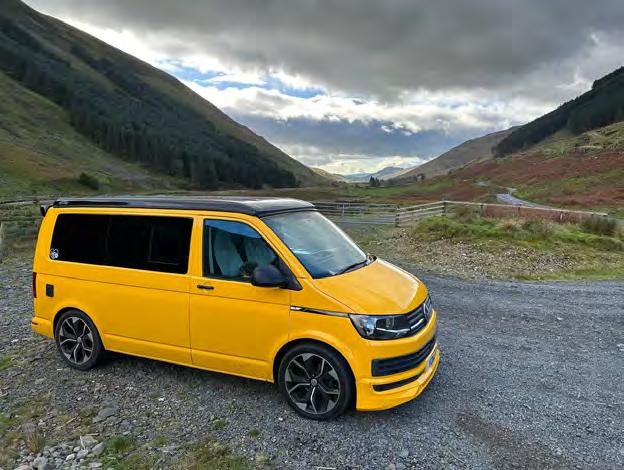







— Alan Kidd, Editor of 4x4















Ineos’ Quartermaster Kaiju sets out its stall as a template for world-class overlanding builds

SUVs spreading wisdom in the desert
Nissan’s latest Qashqai gets better than ever
Defender 130 motorhome proves itself in Africa
MARCH 2025 ISSUE: ON SALE 13 FEB





